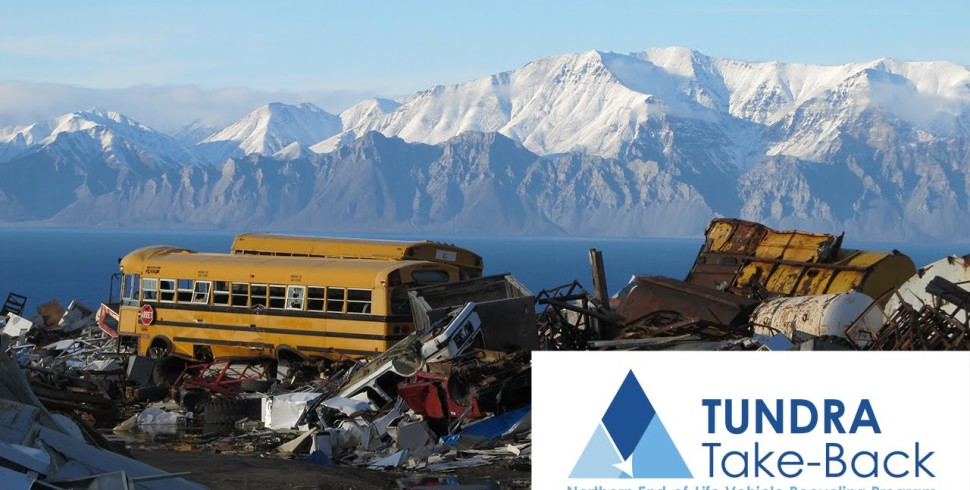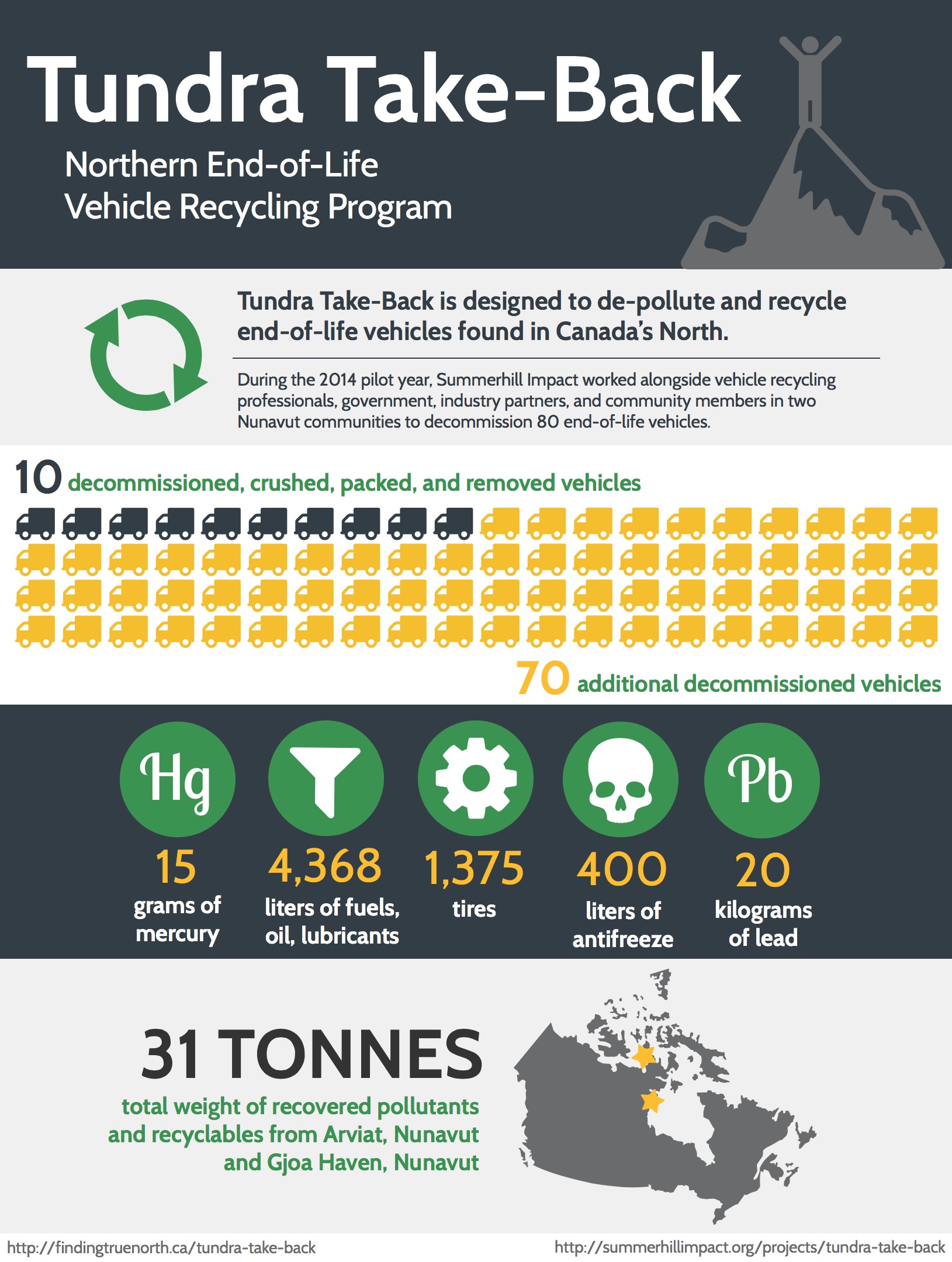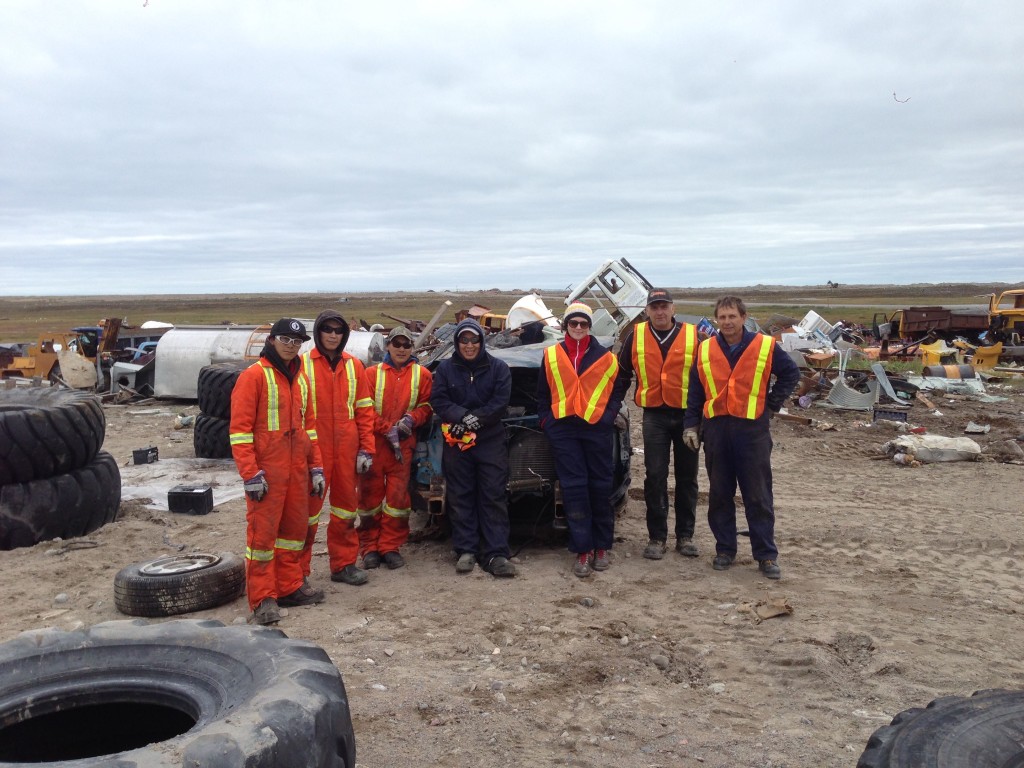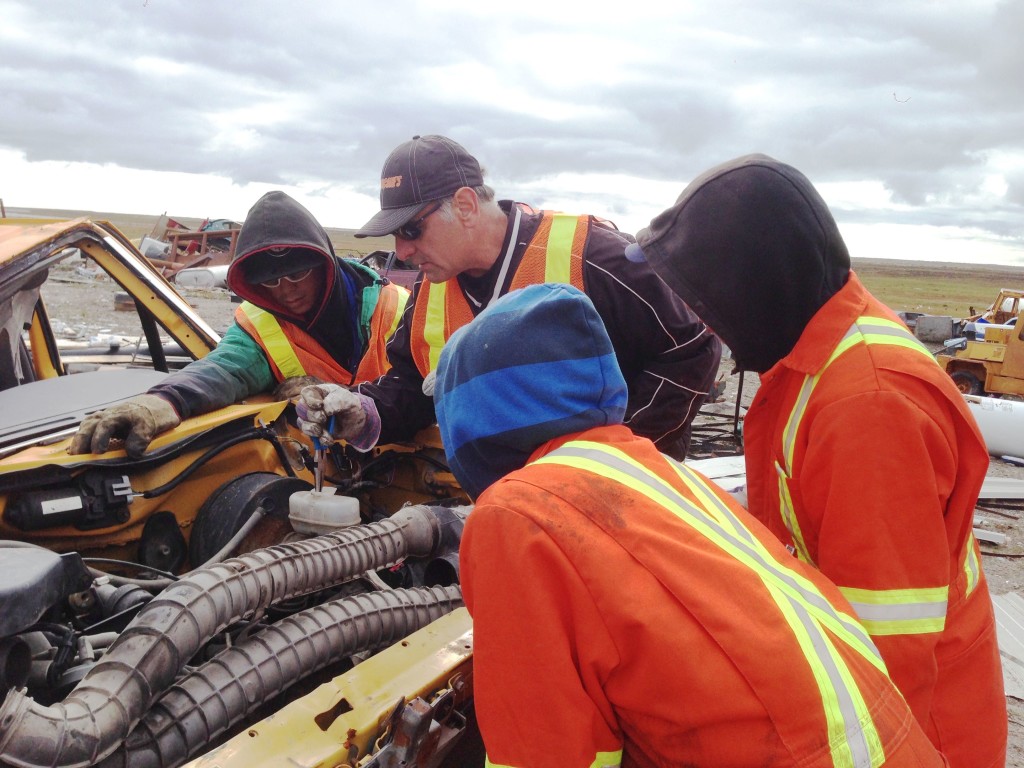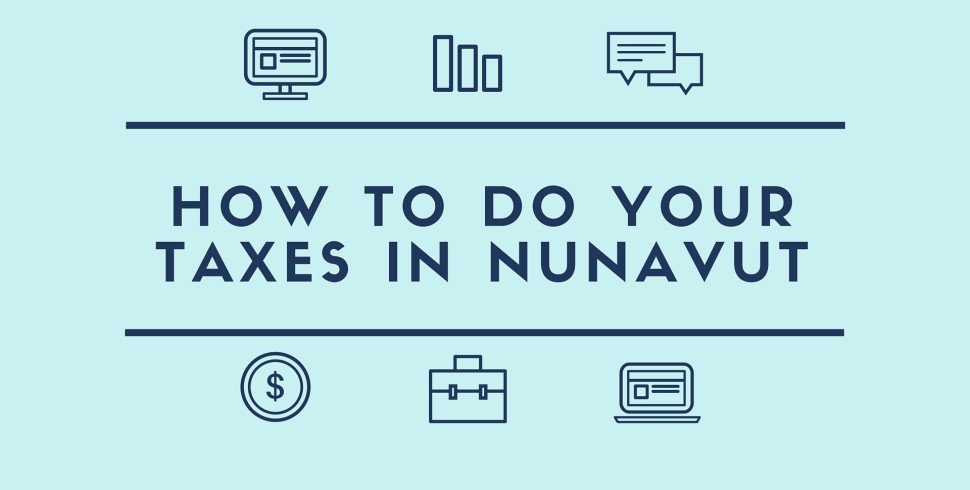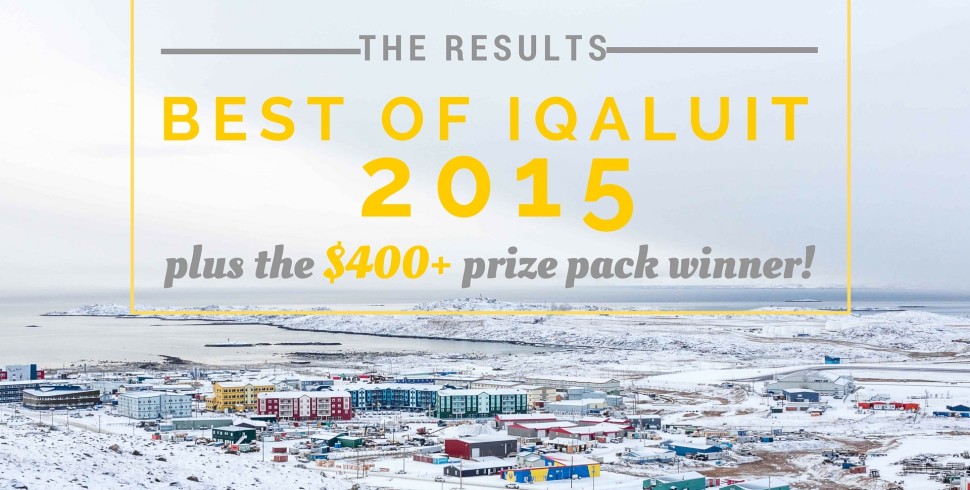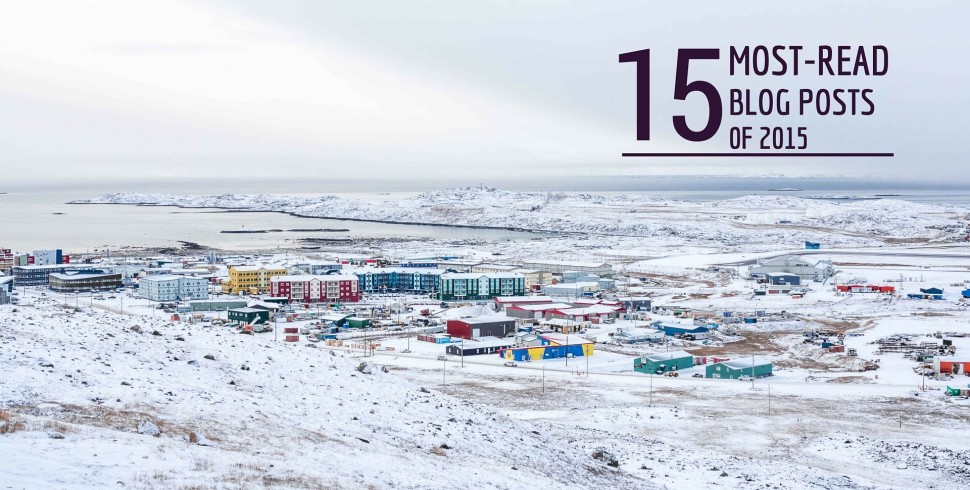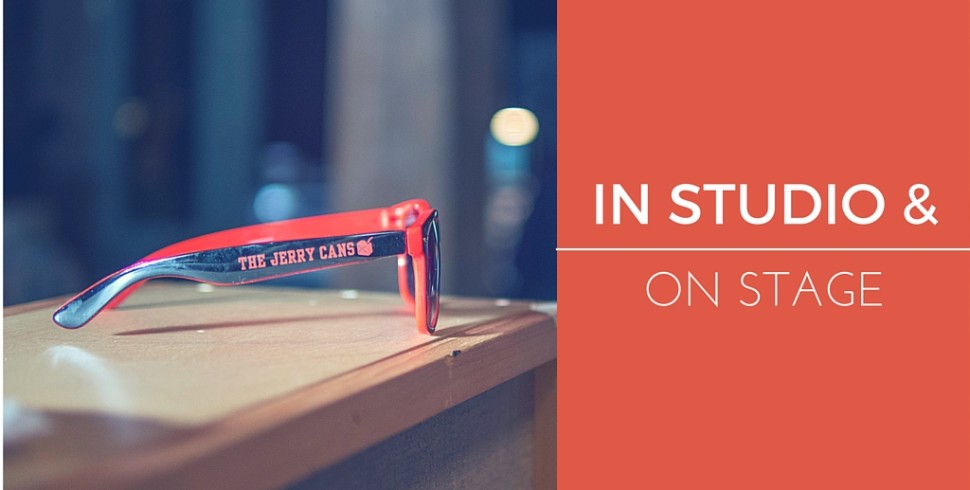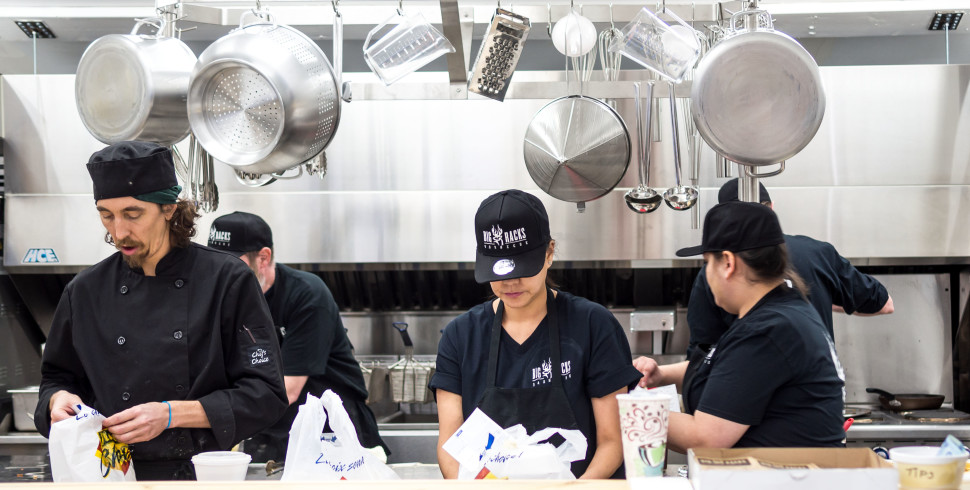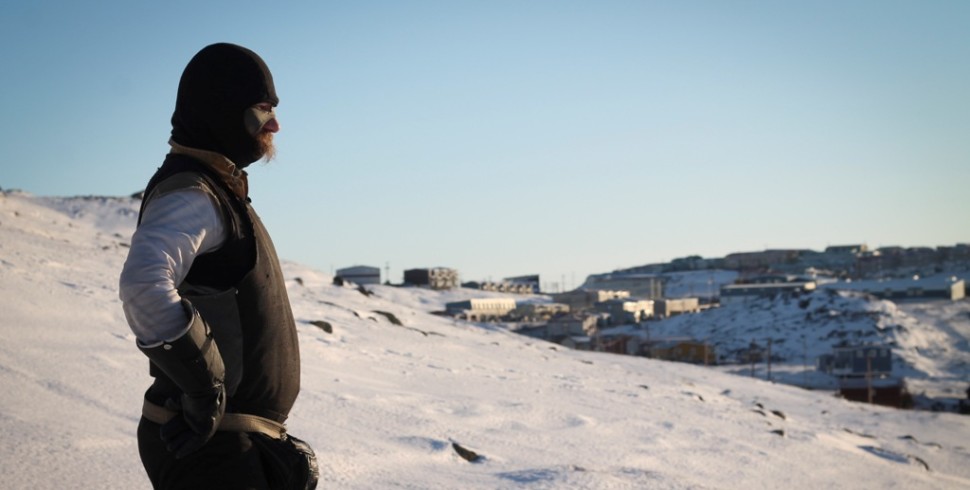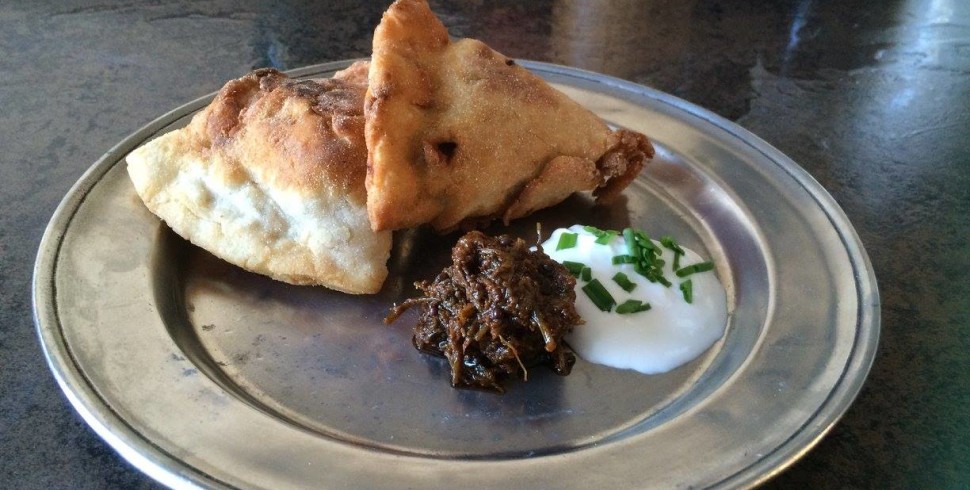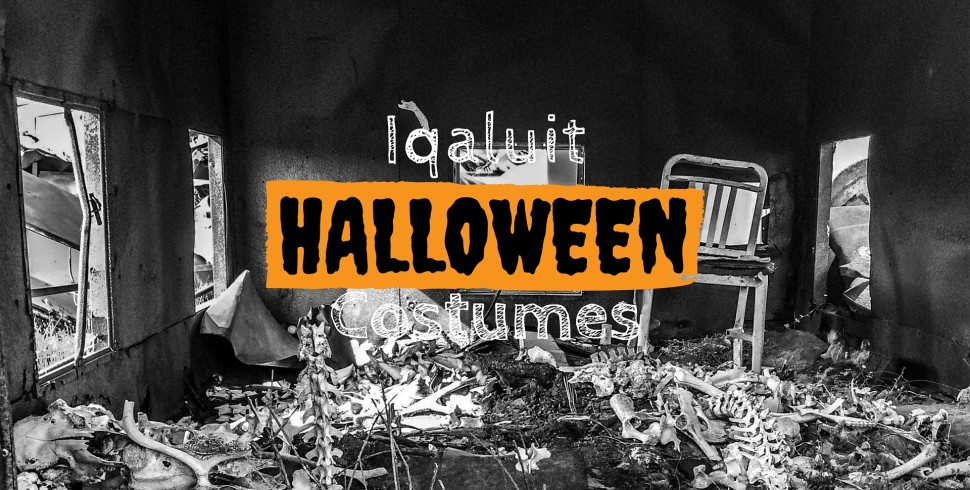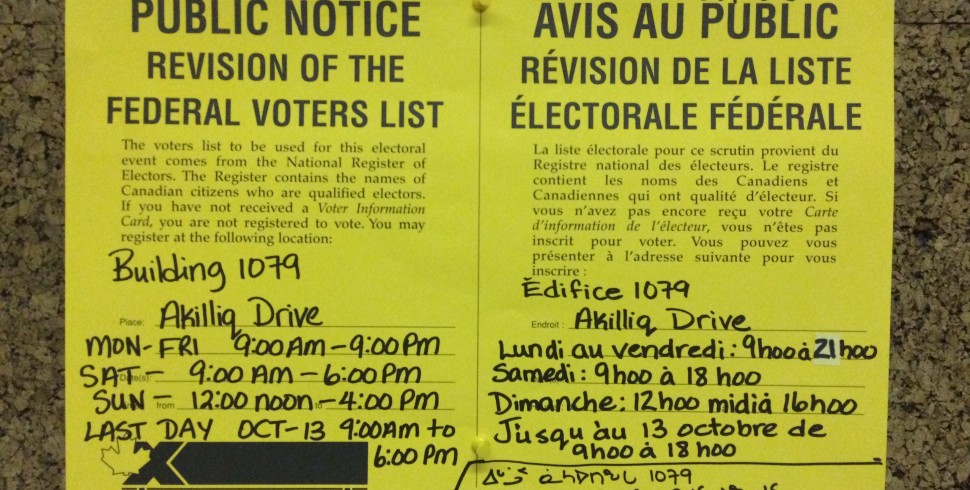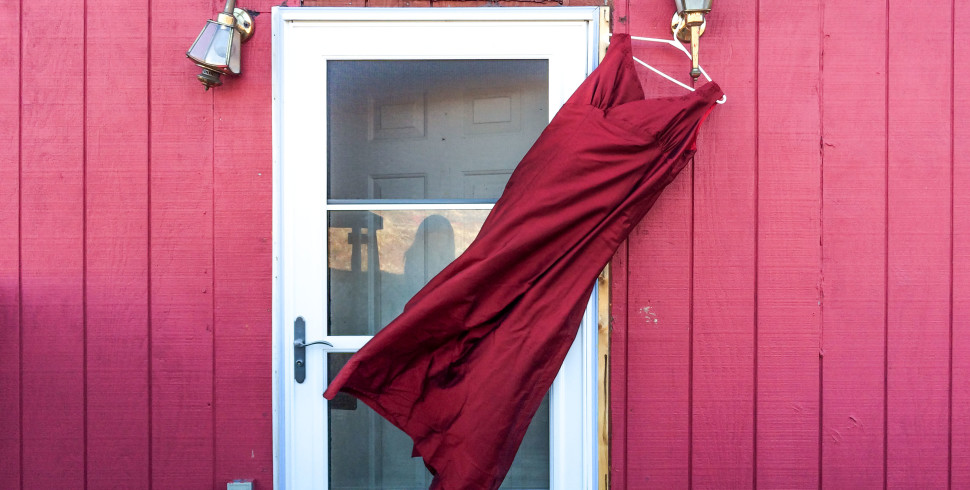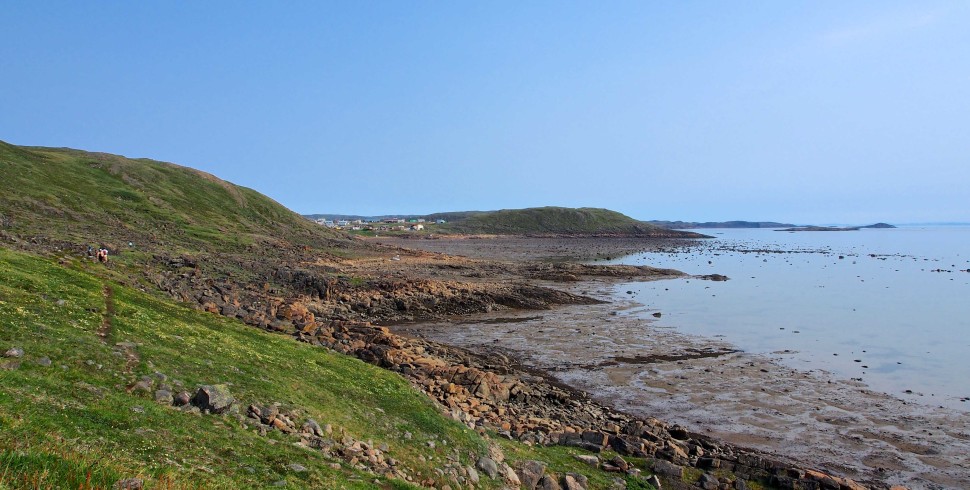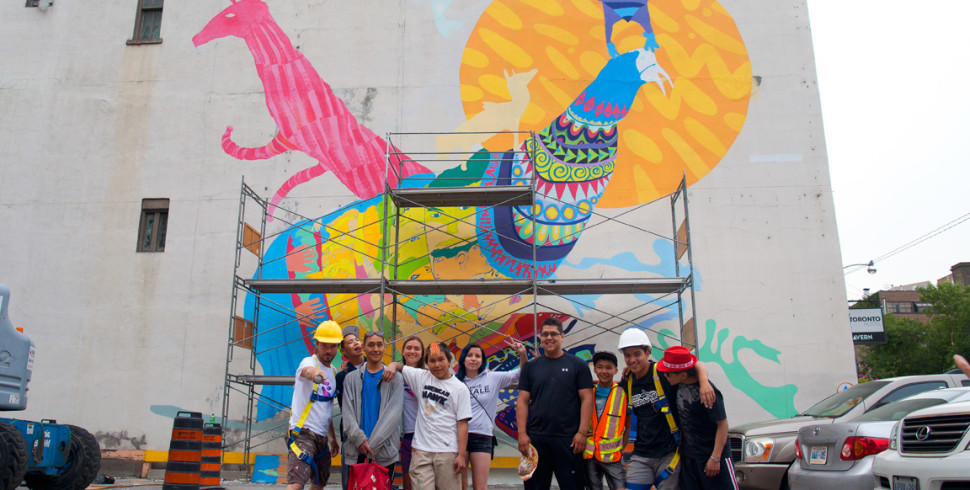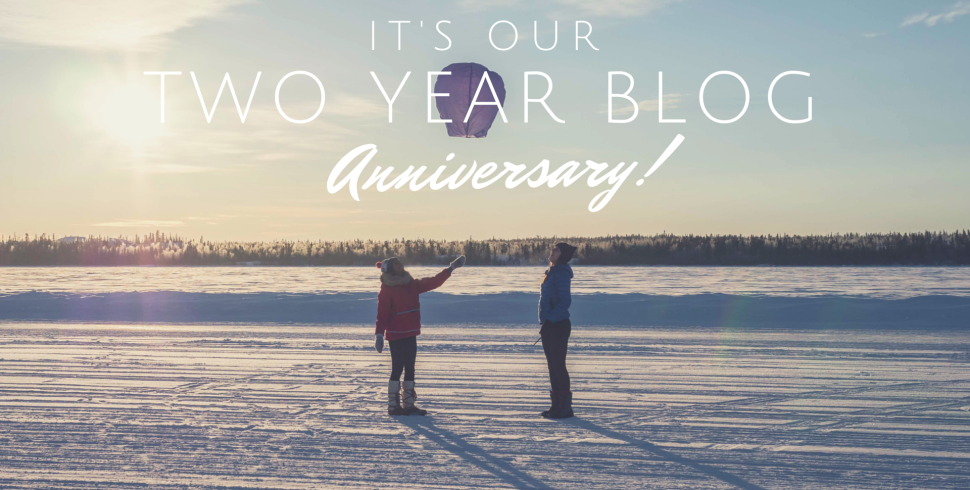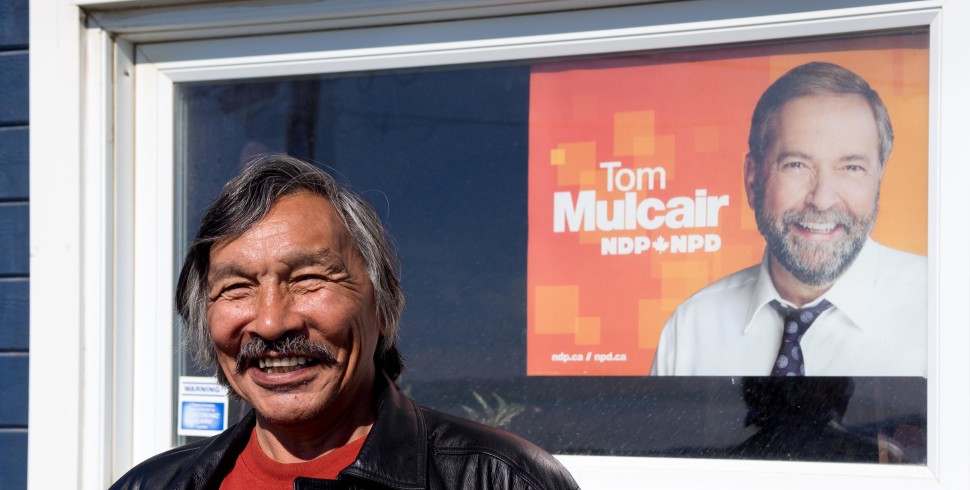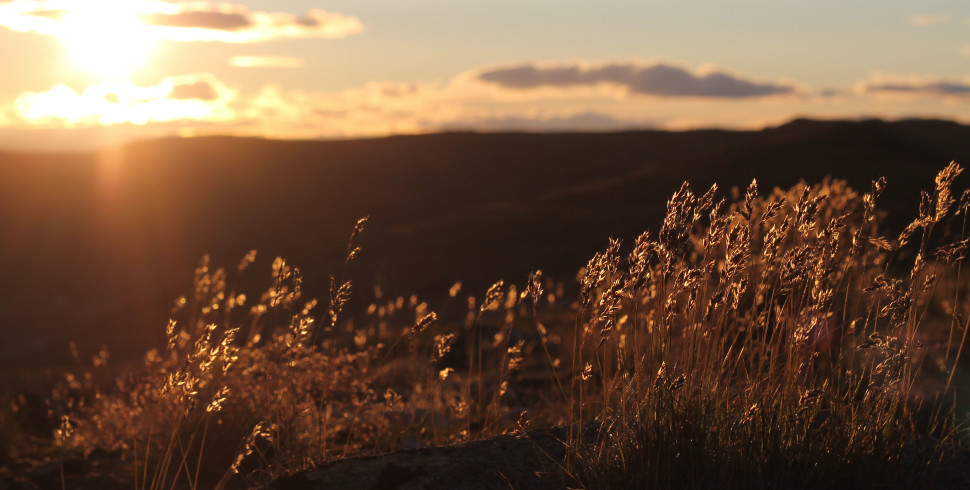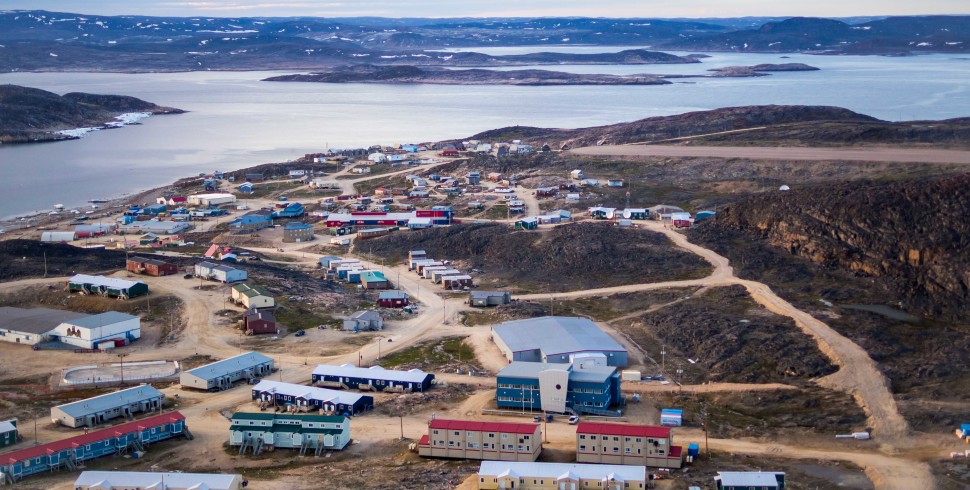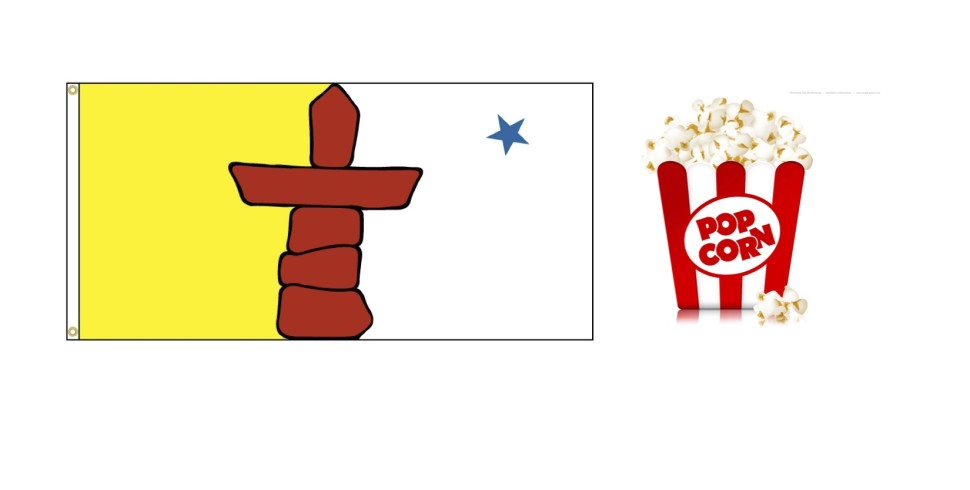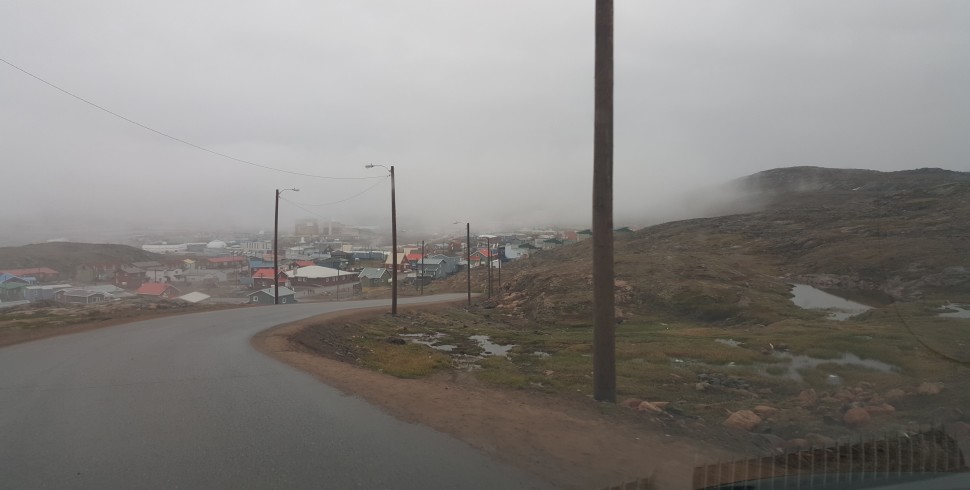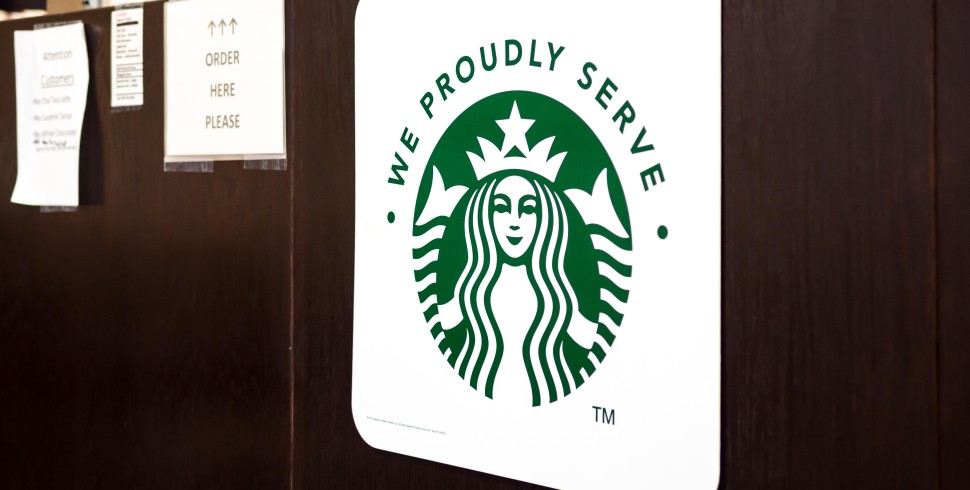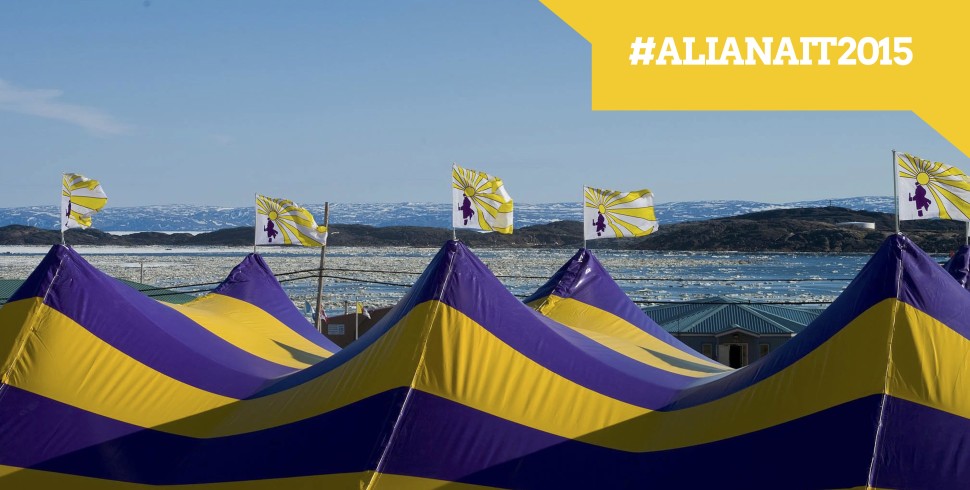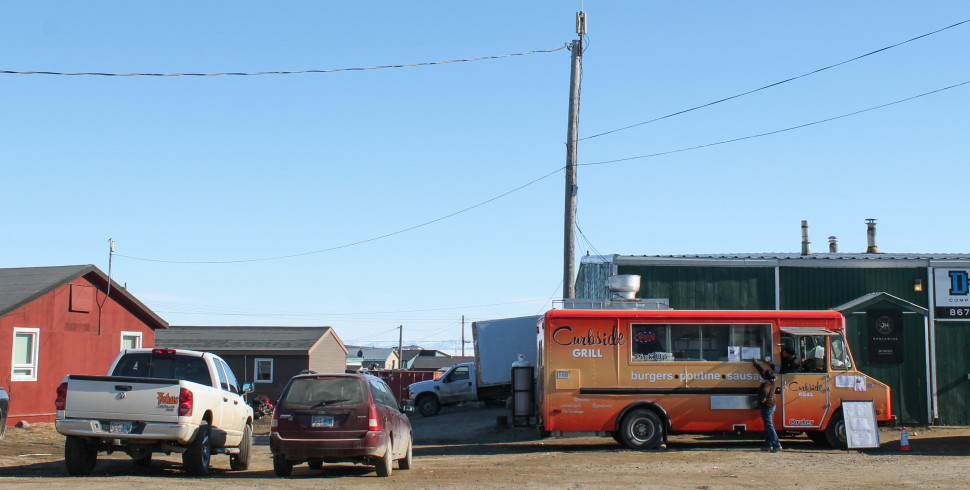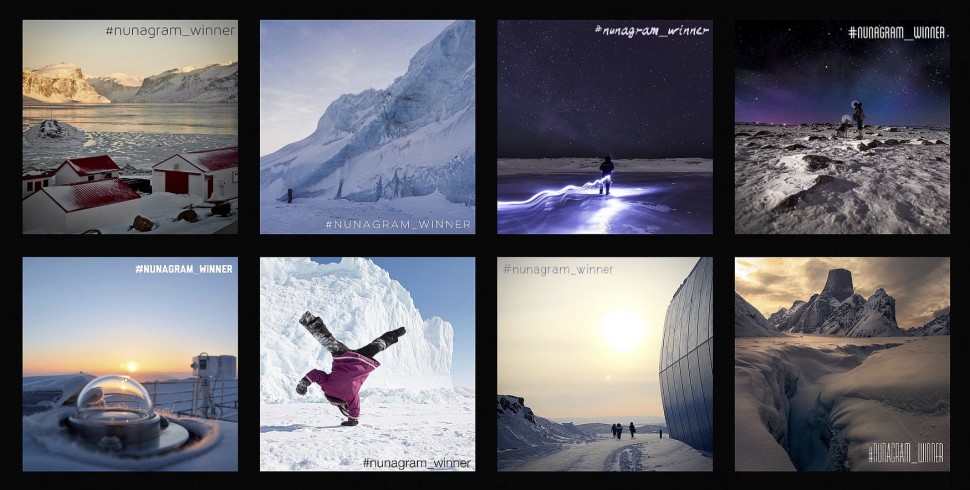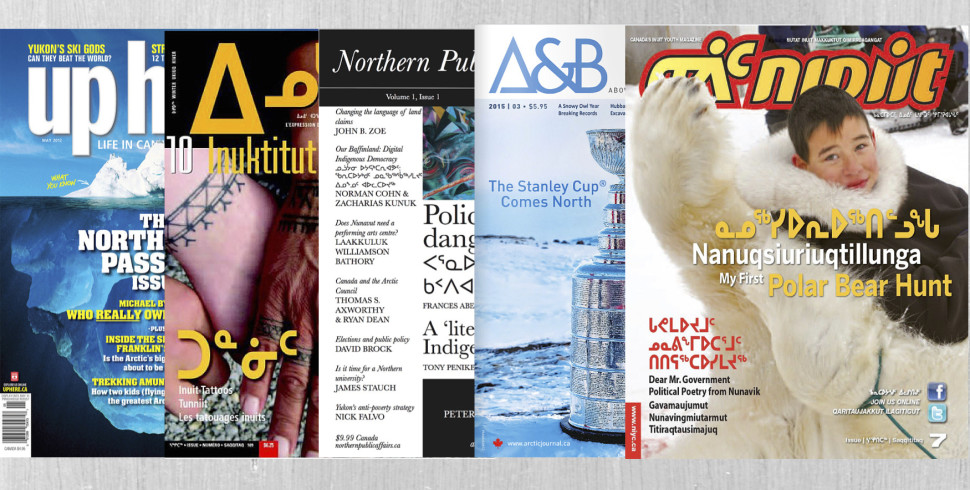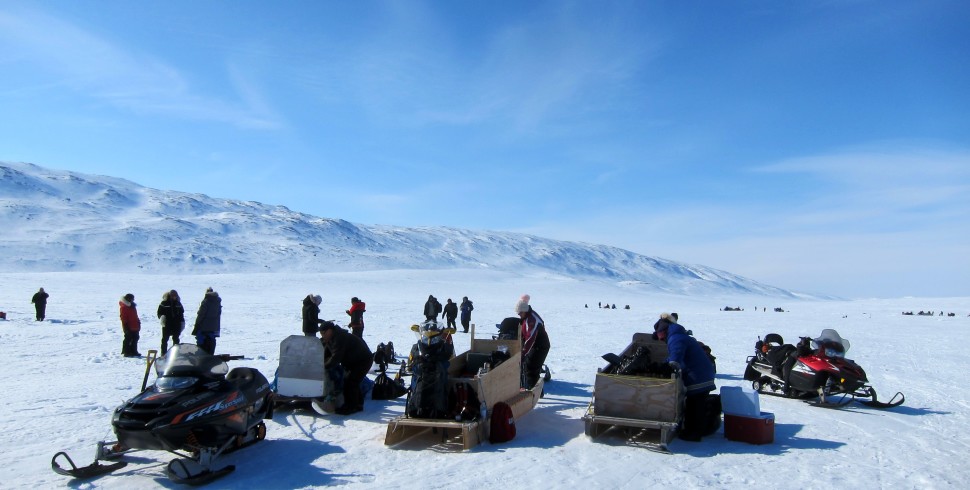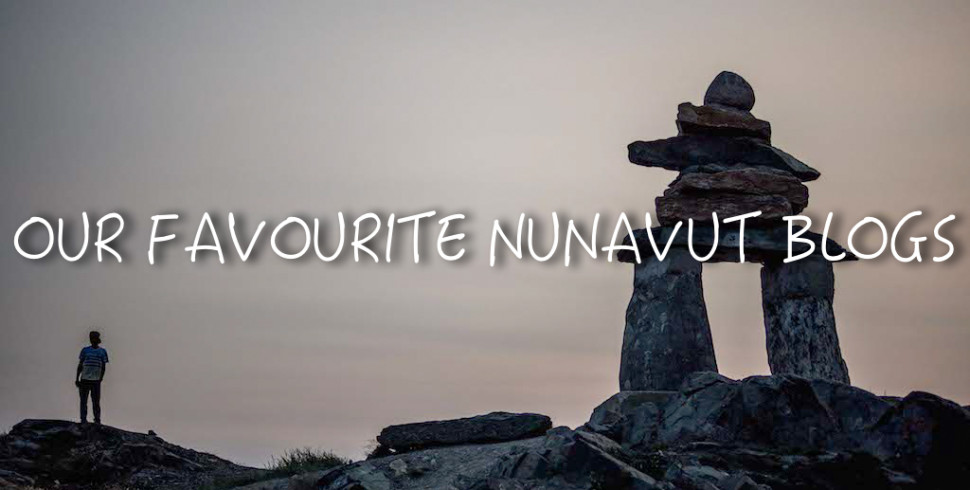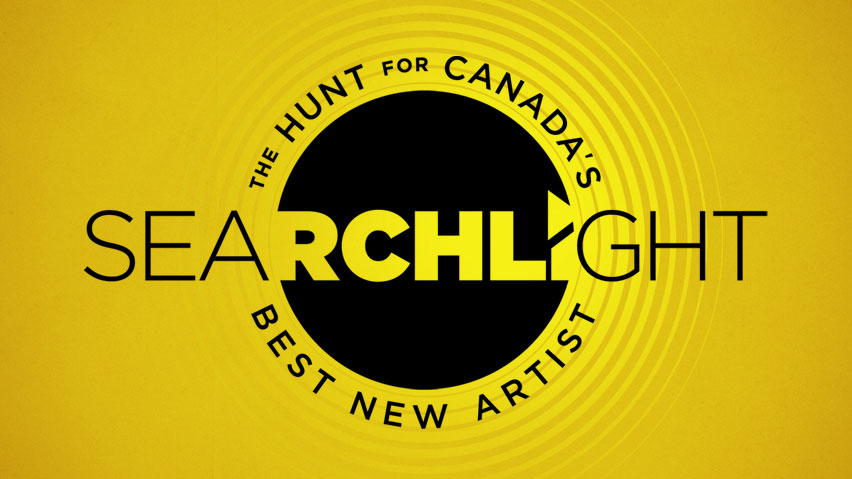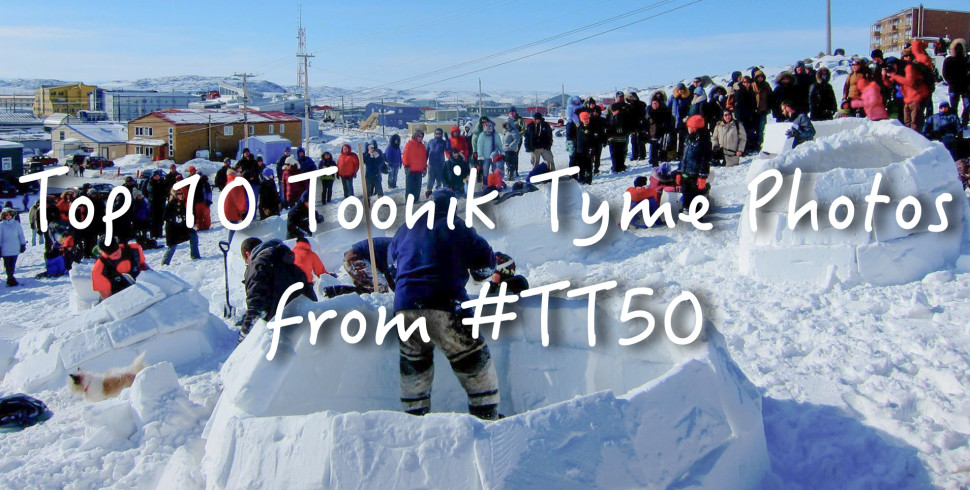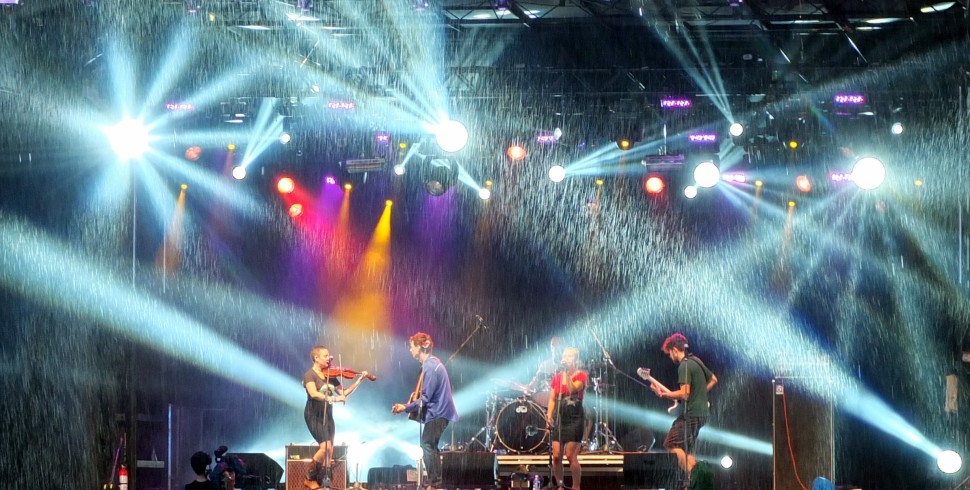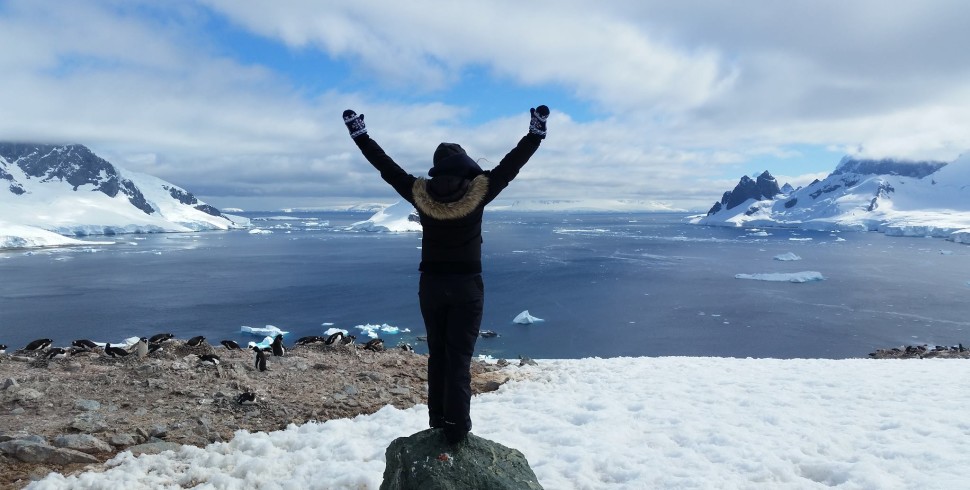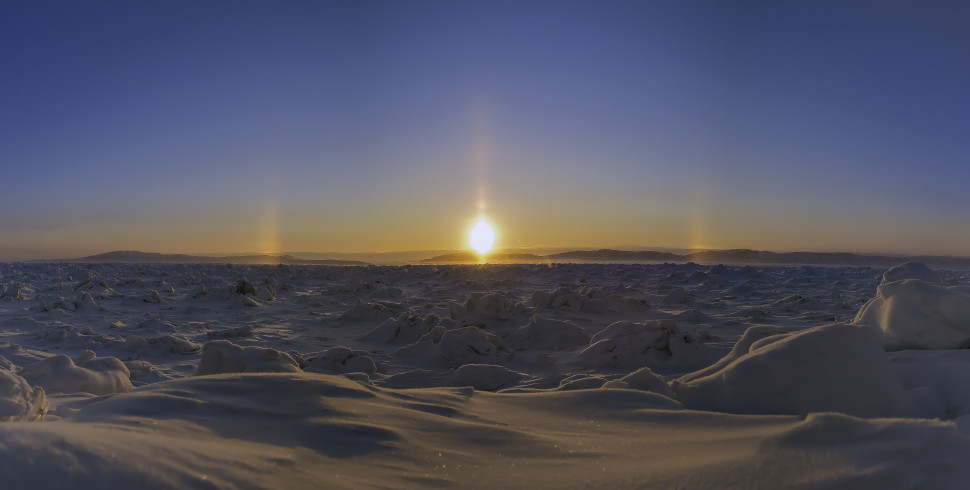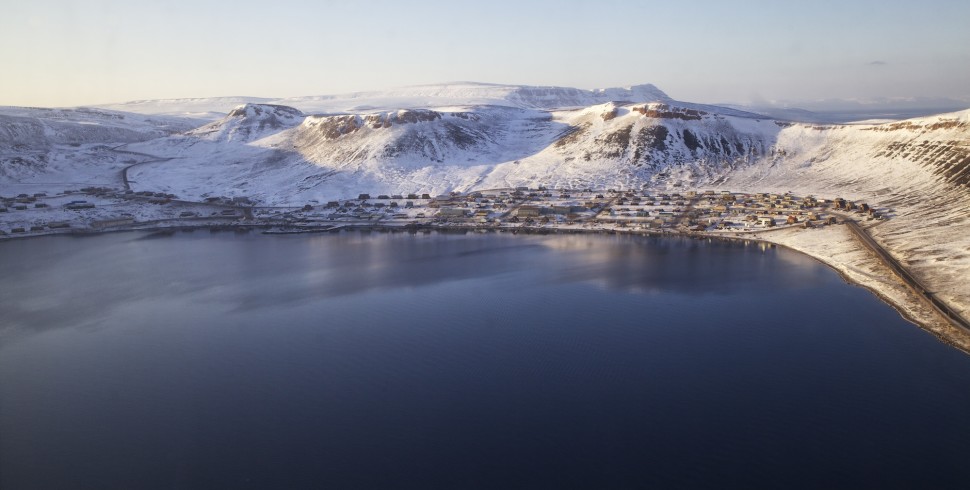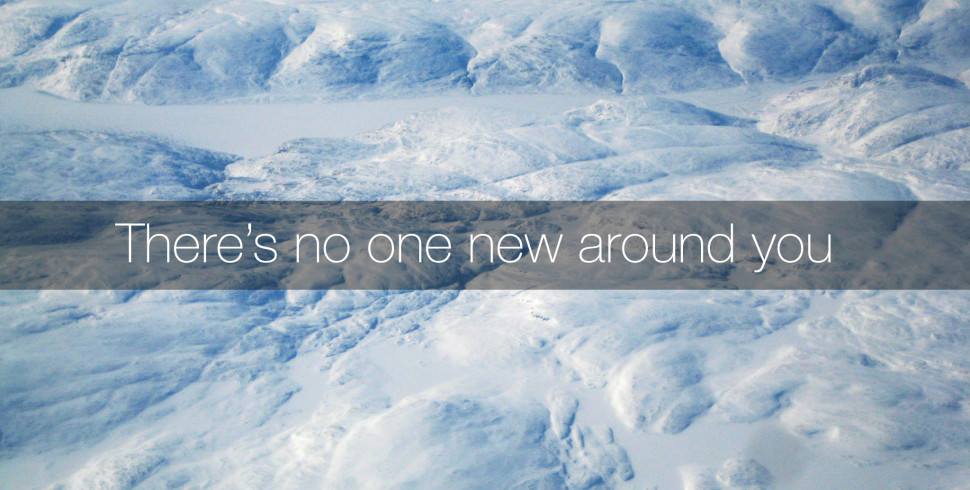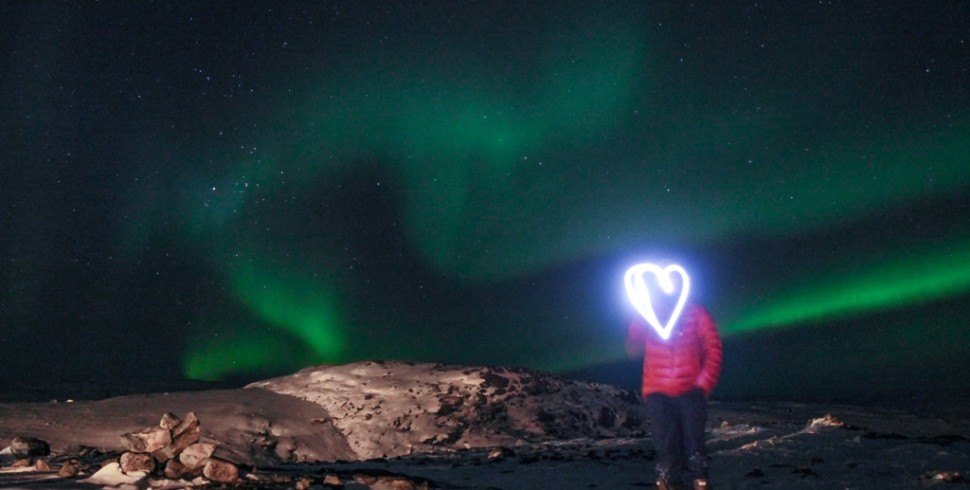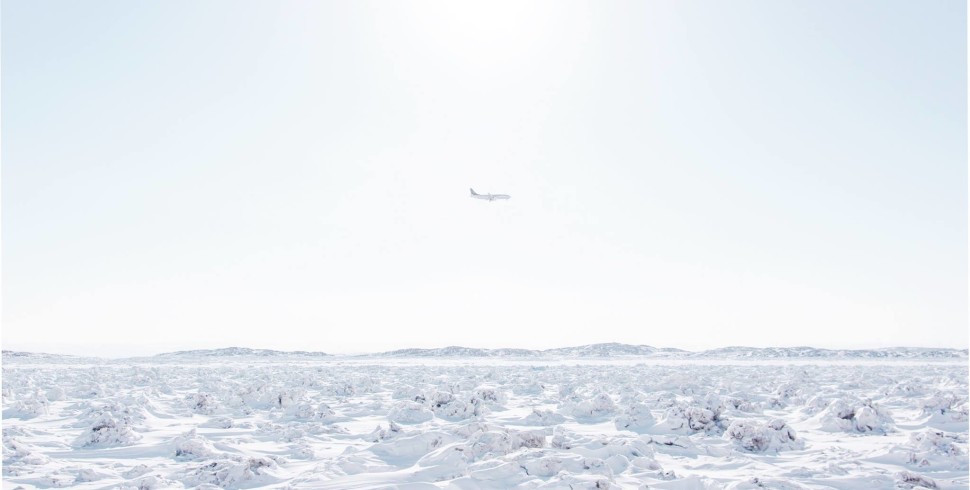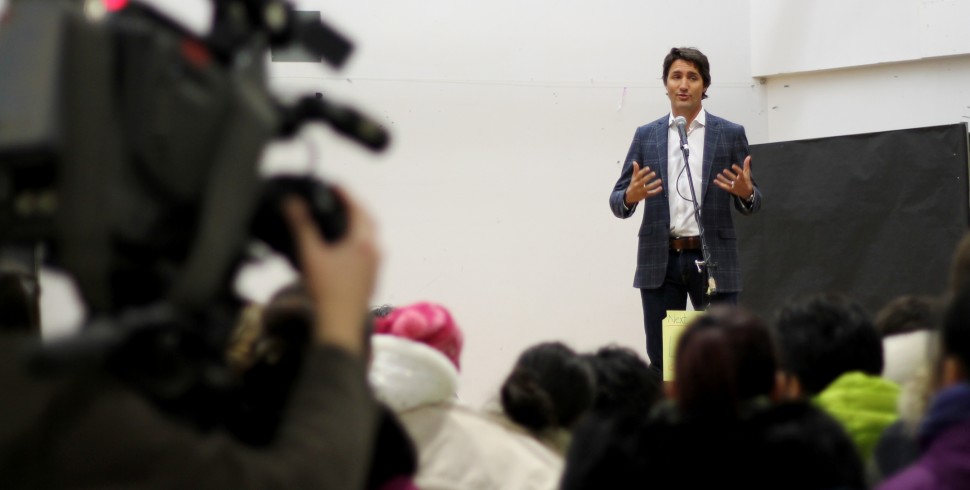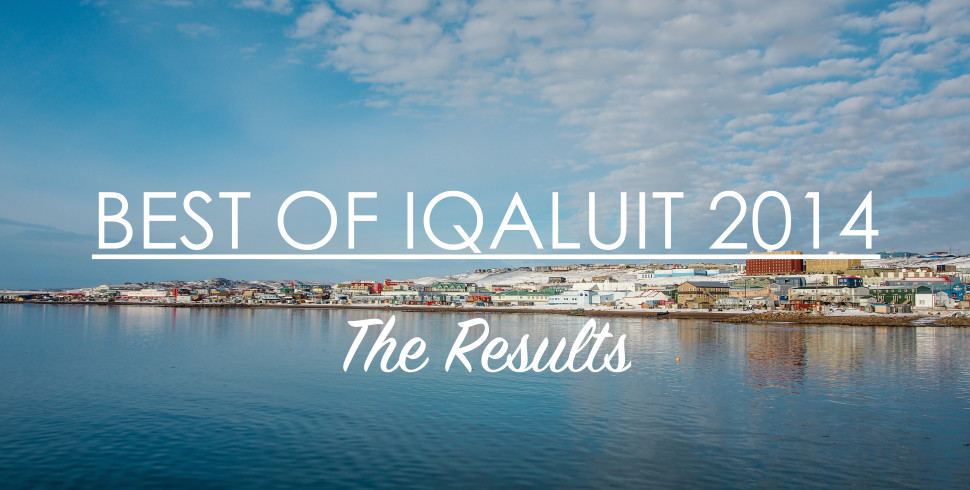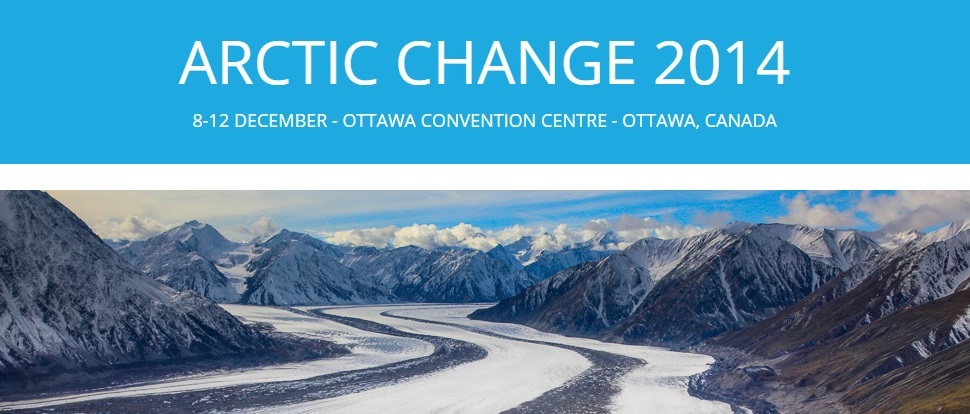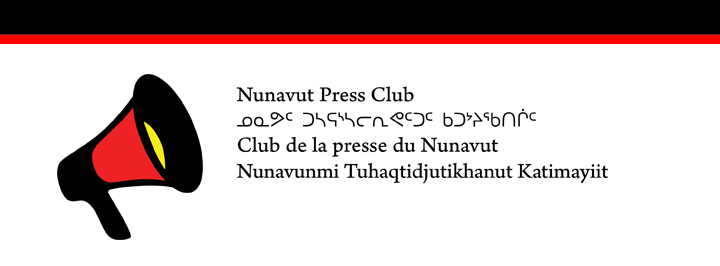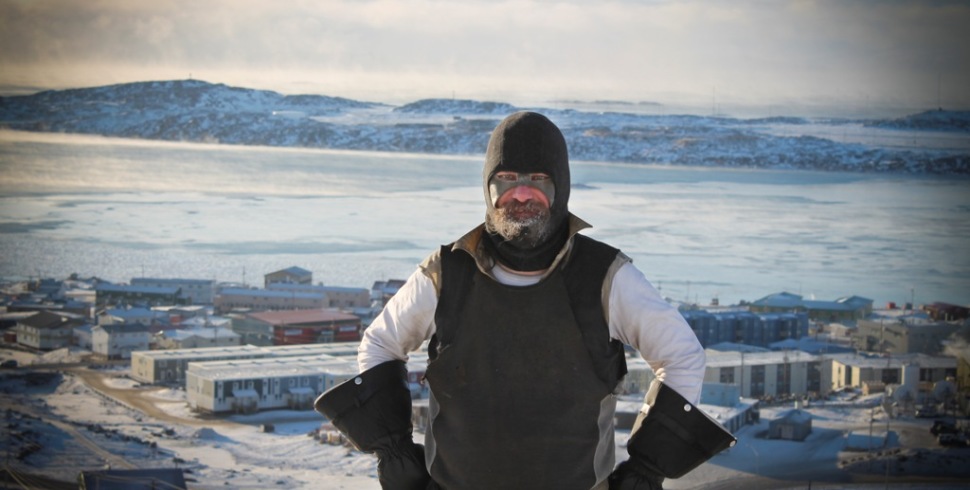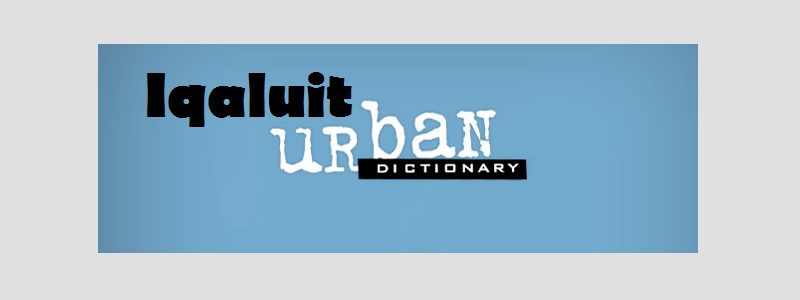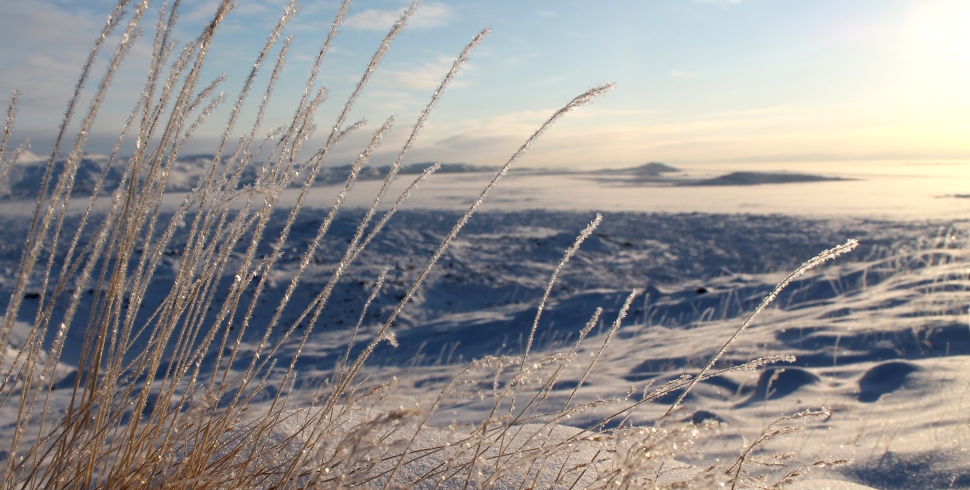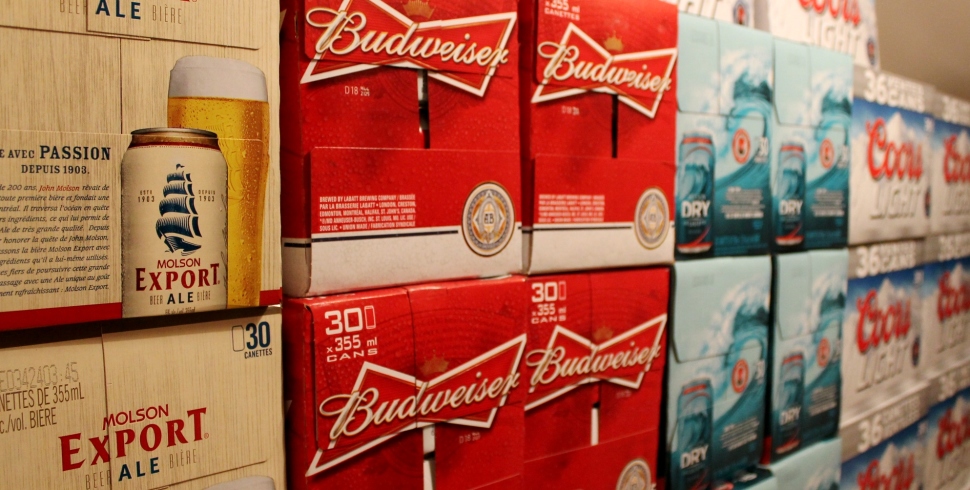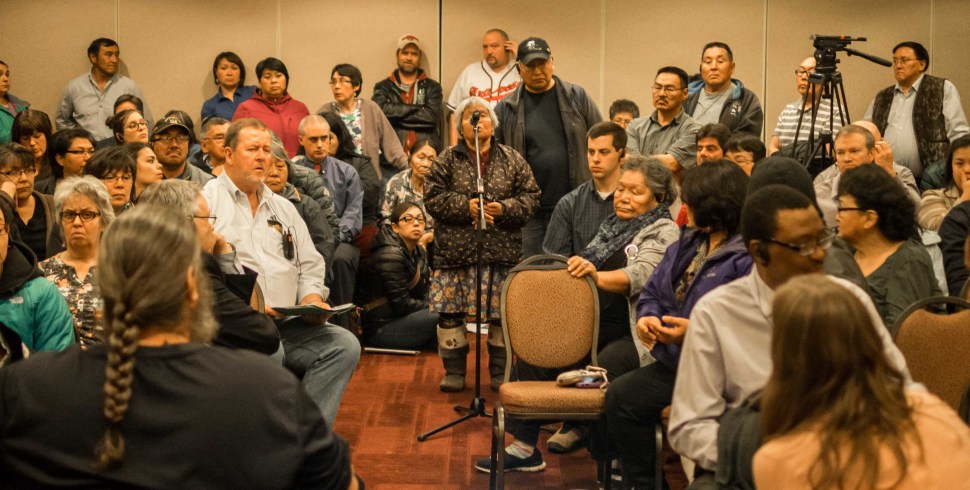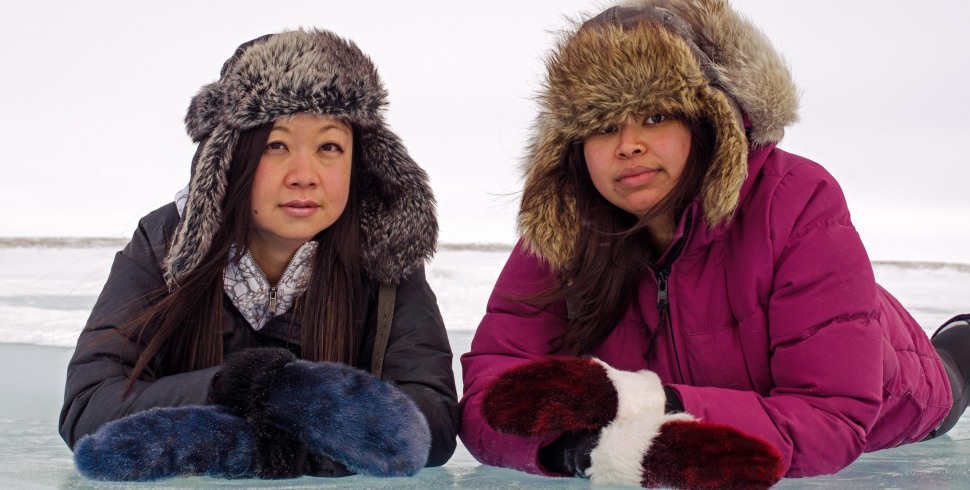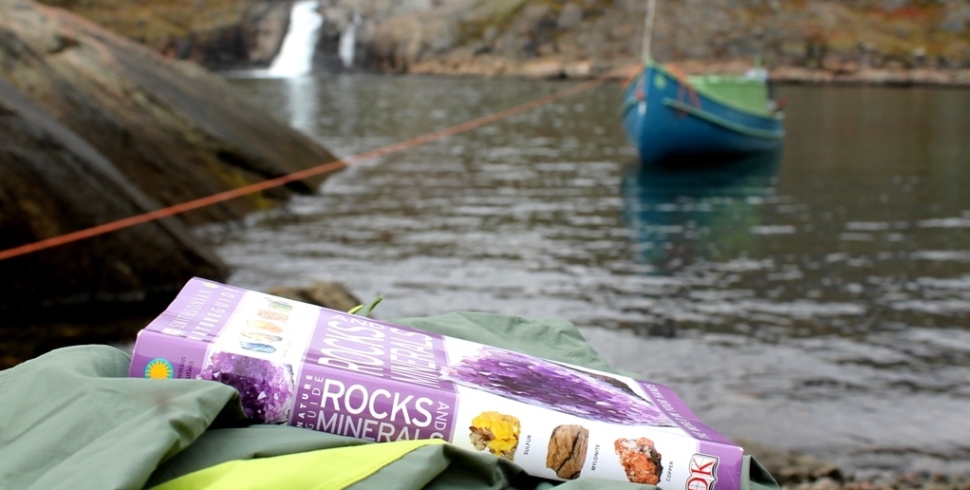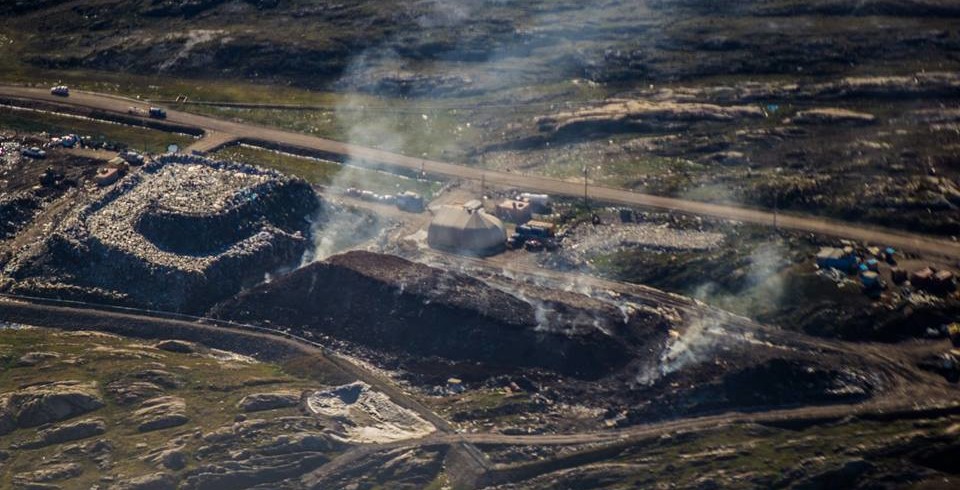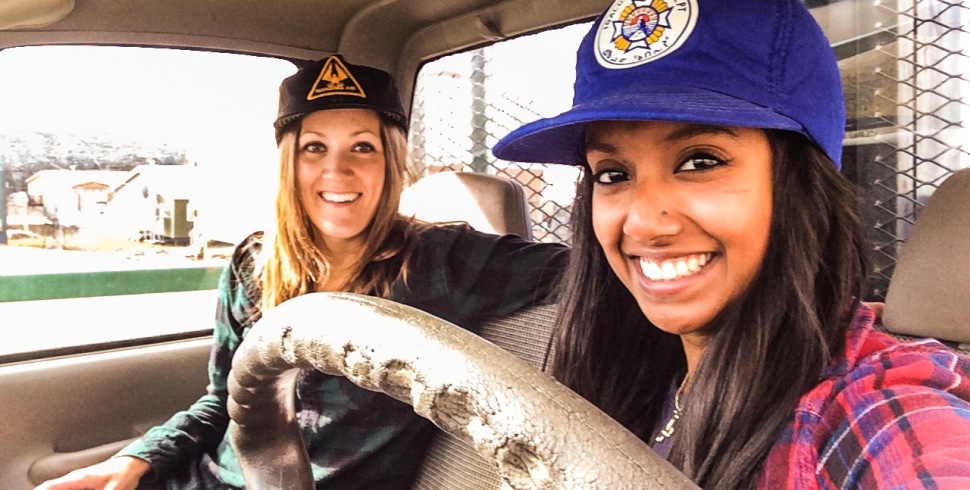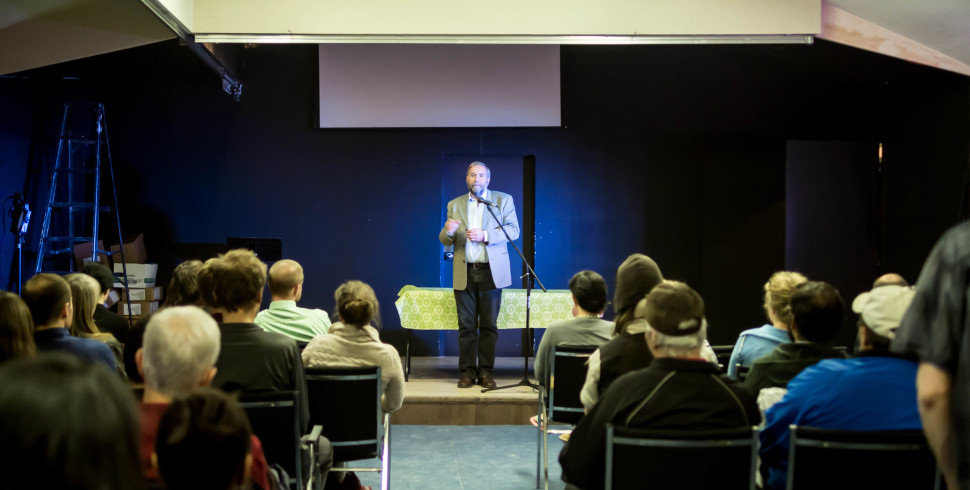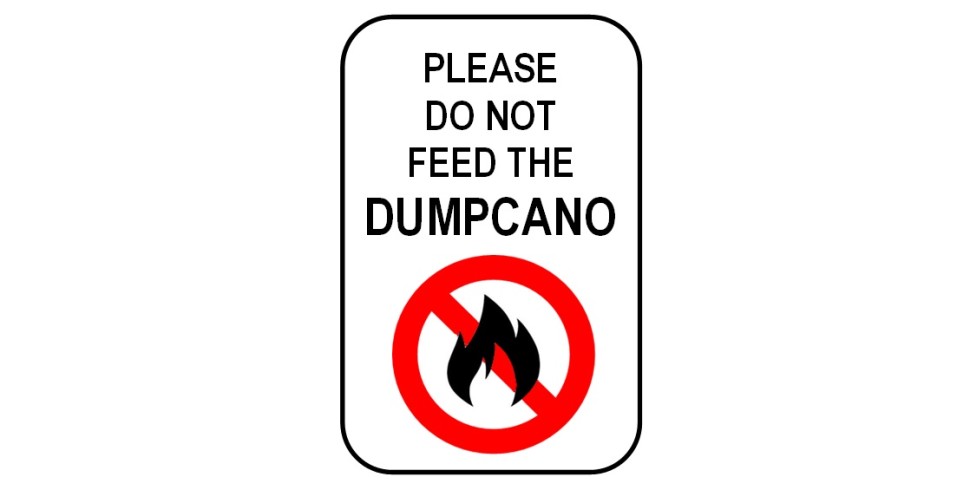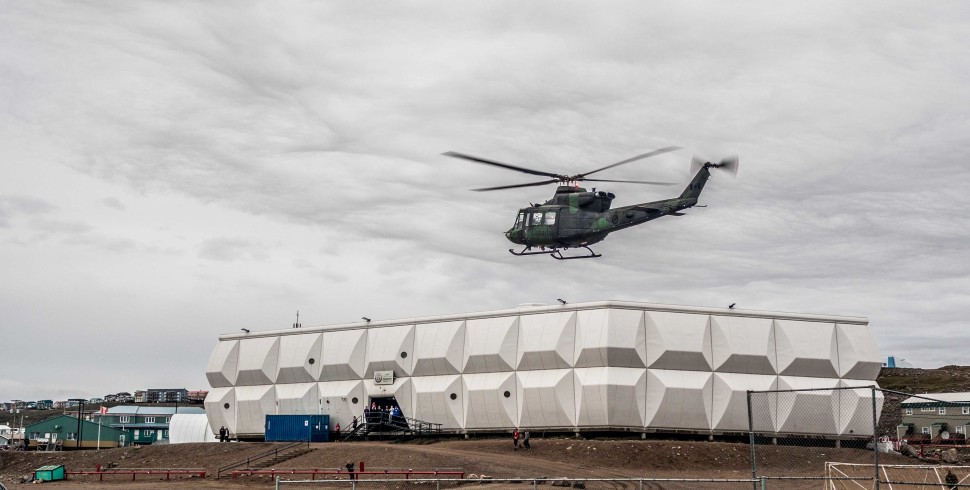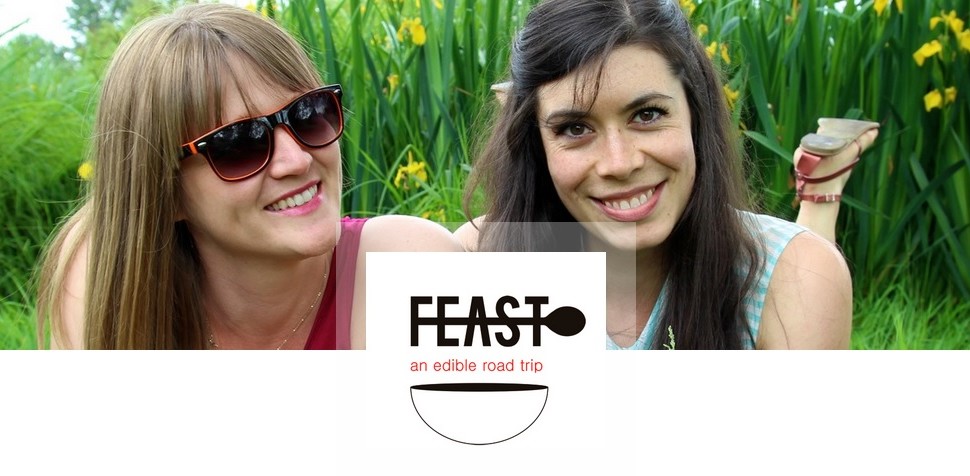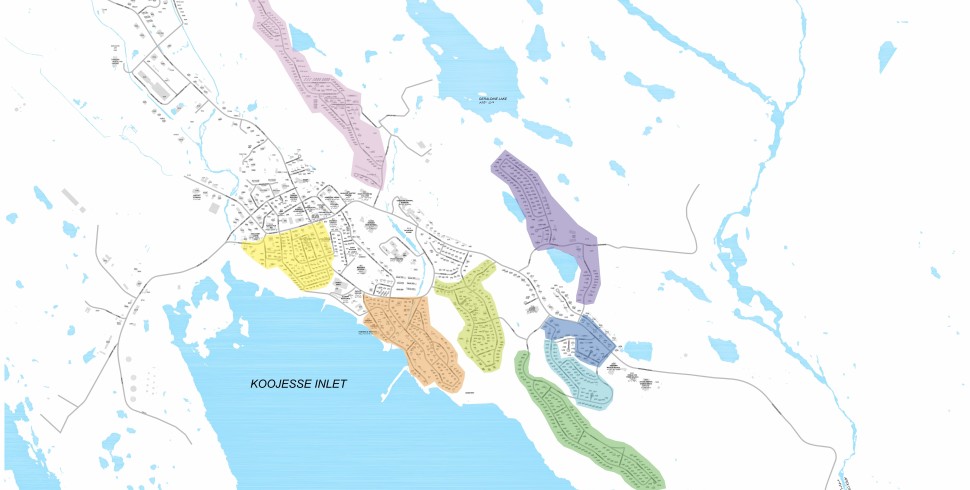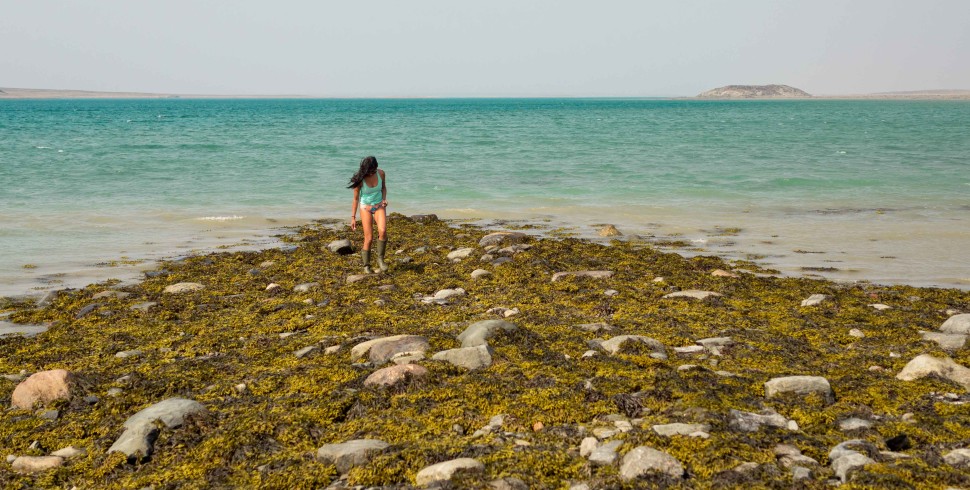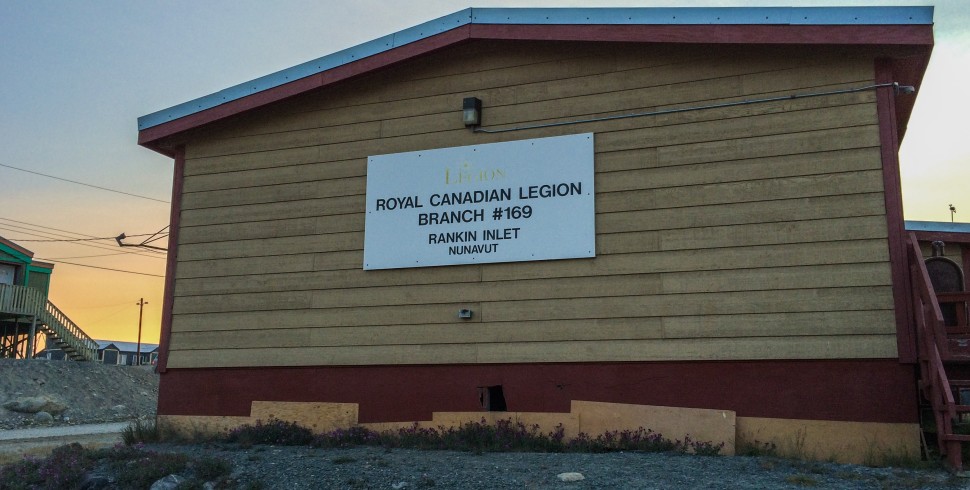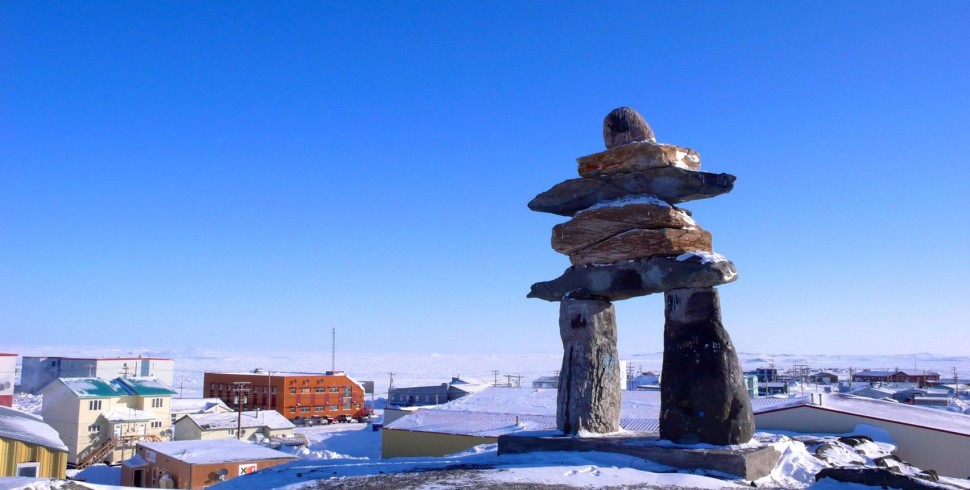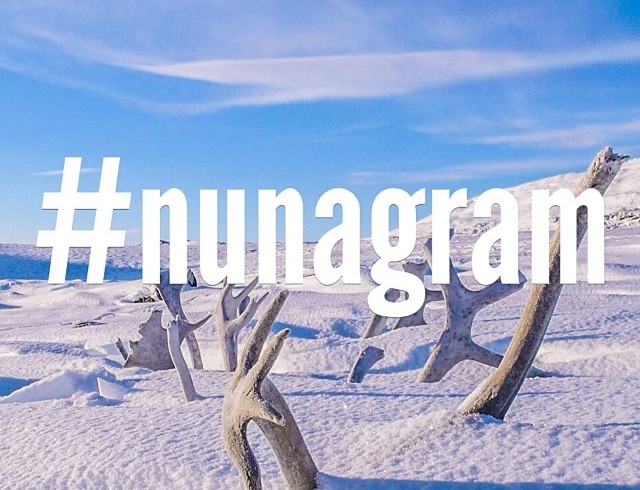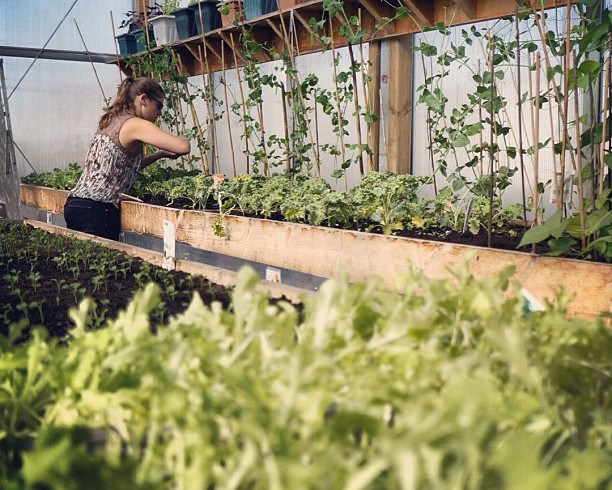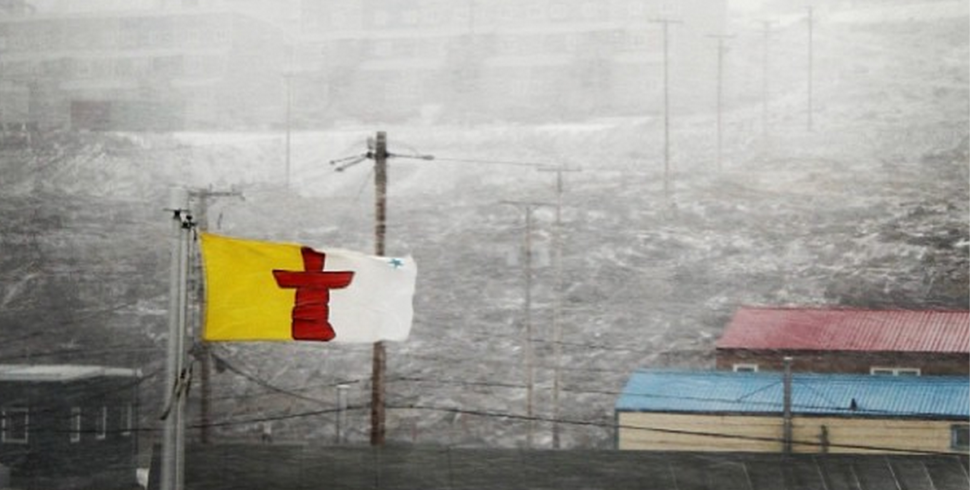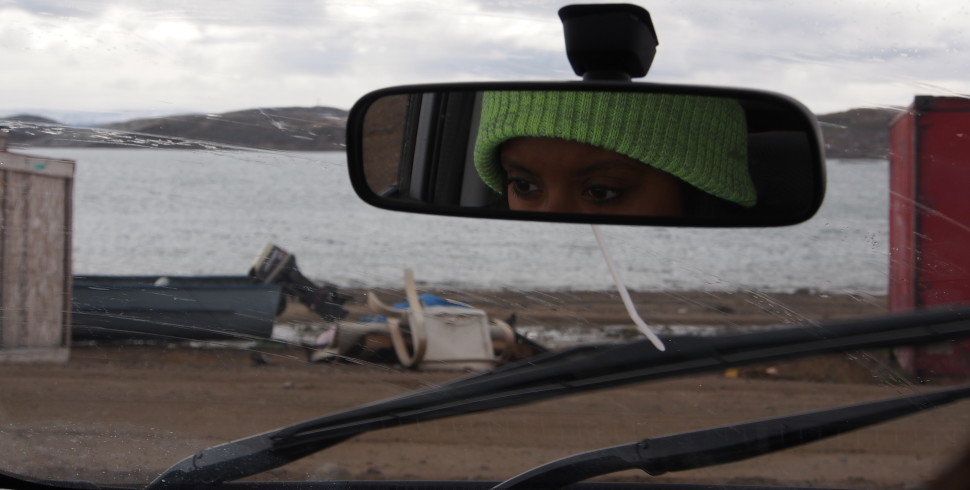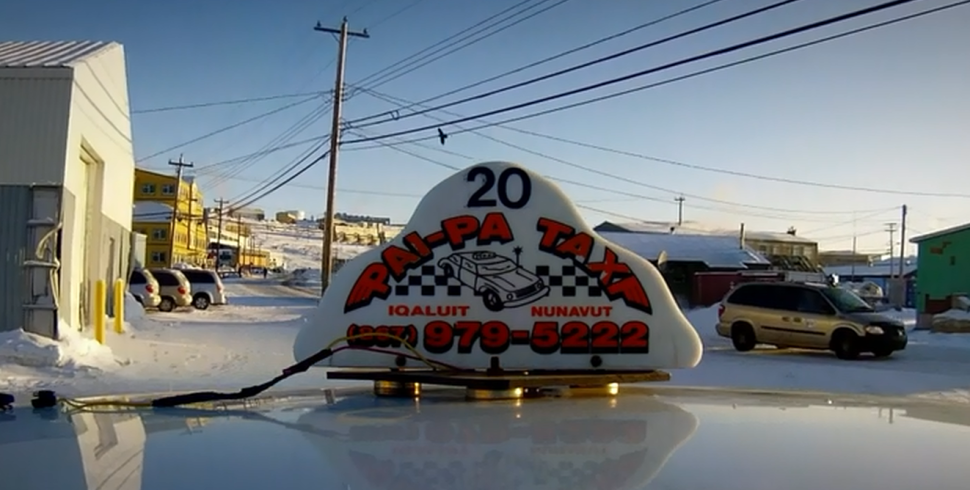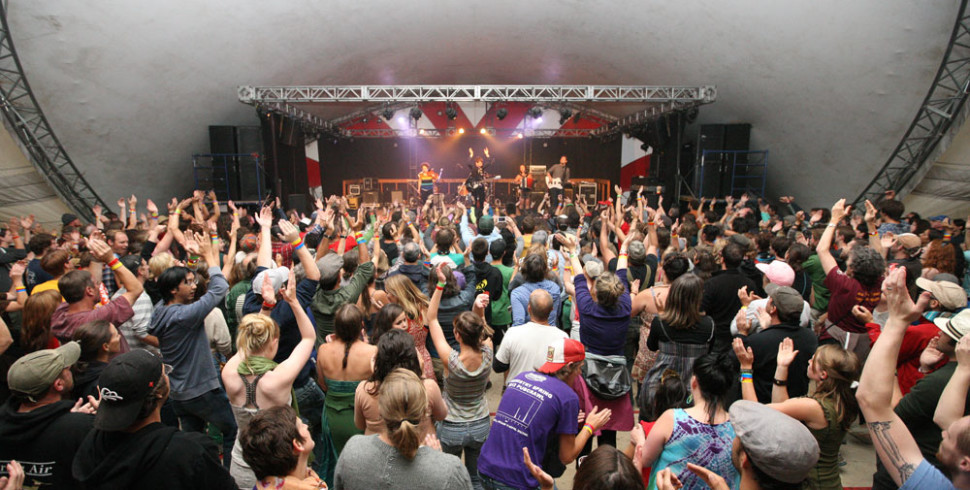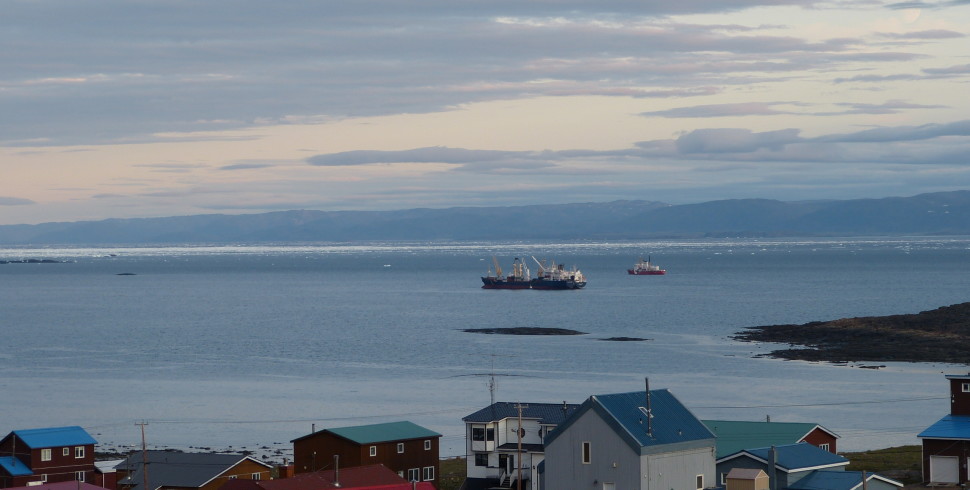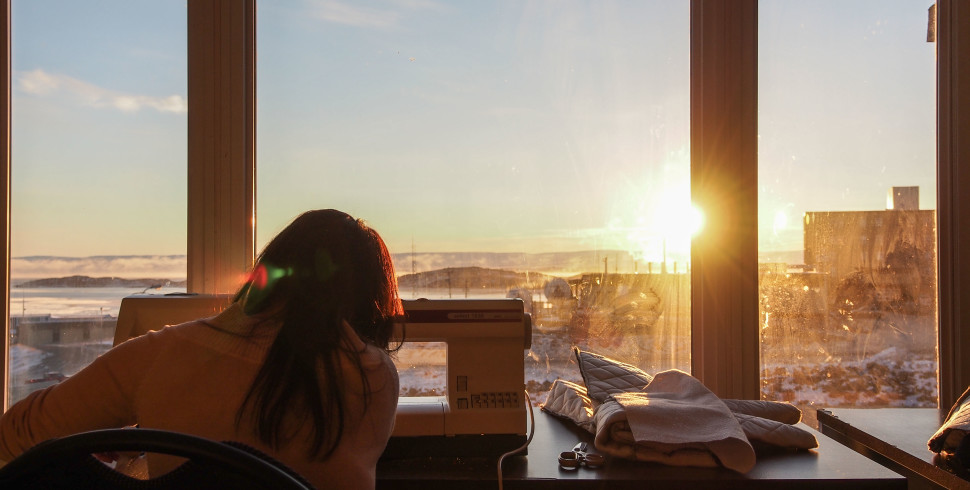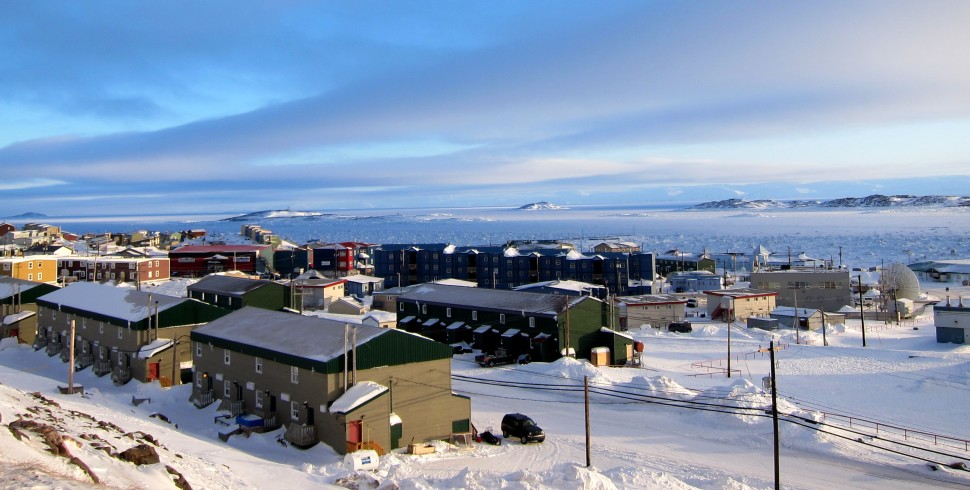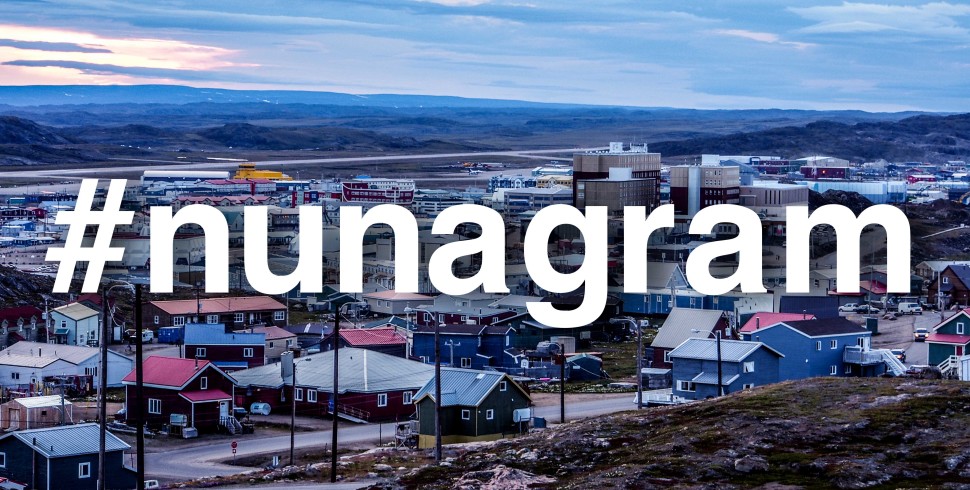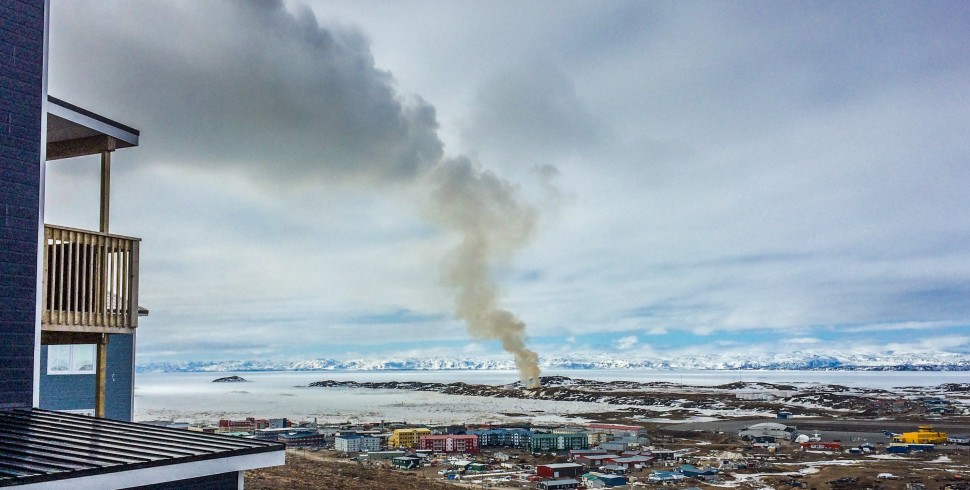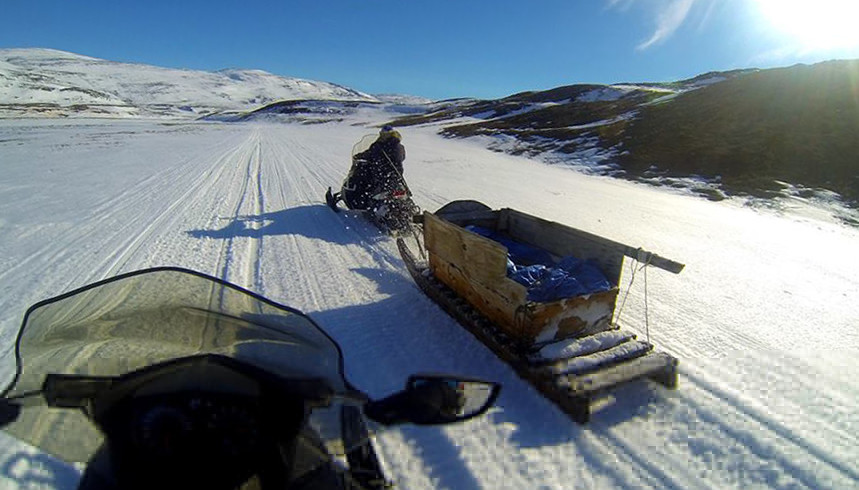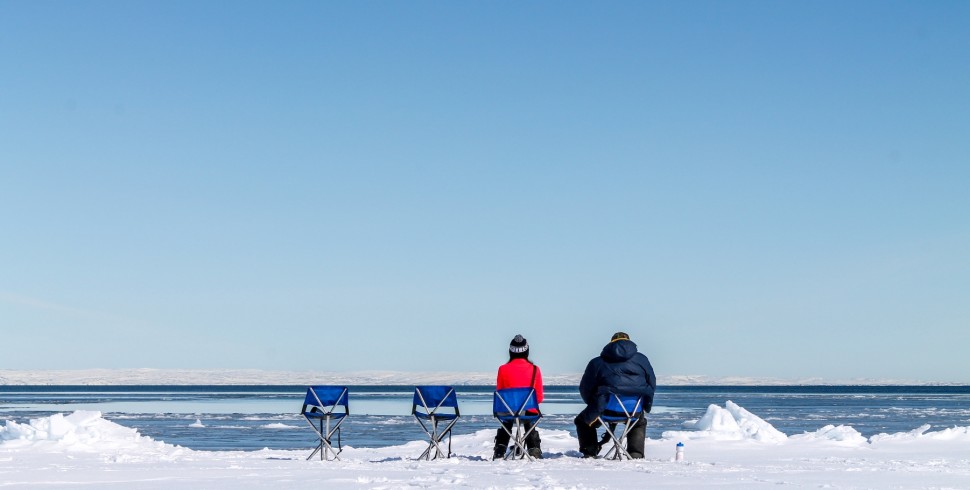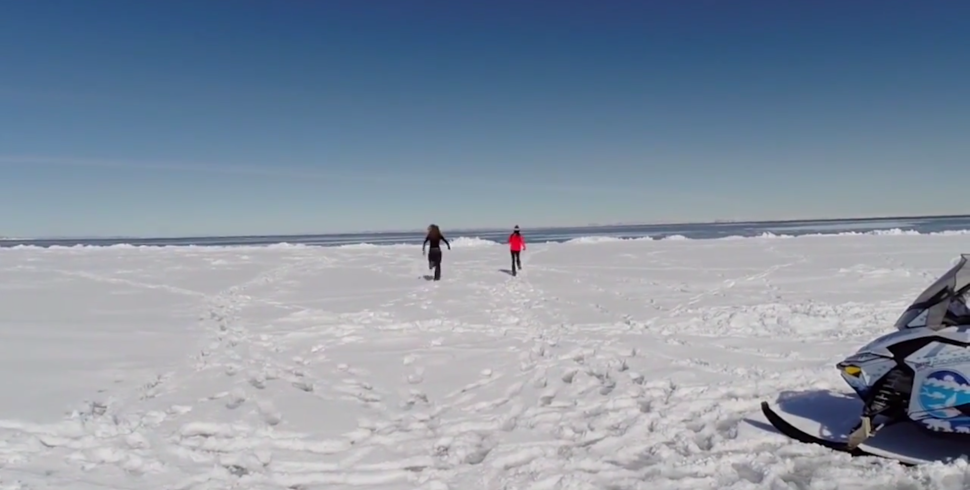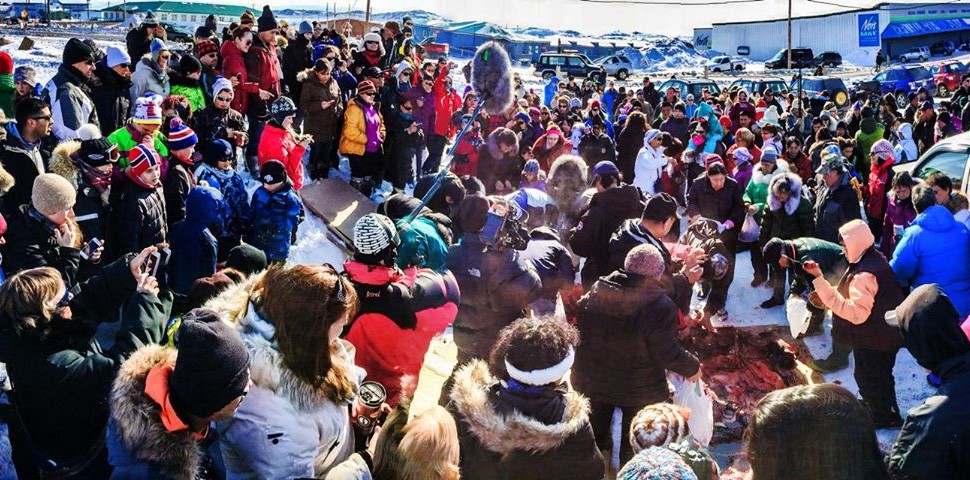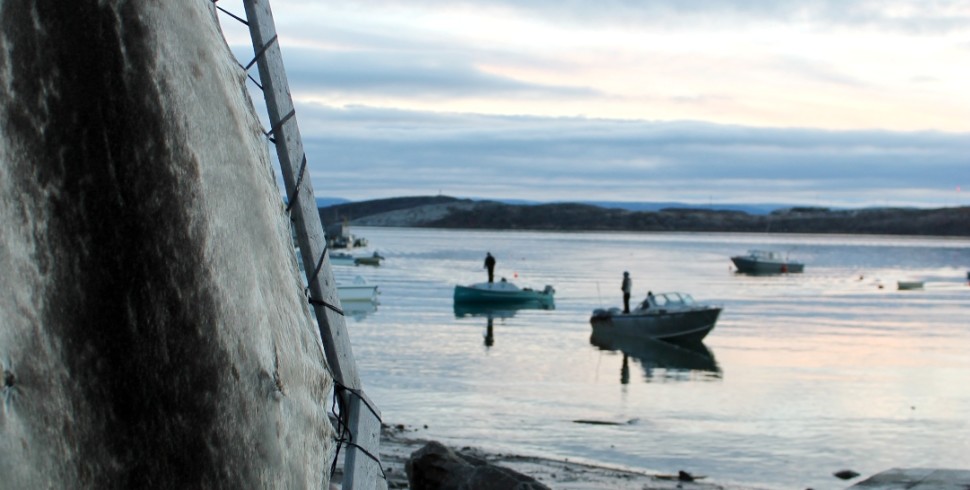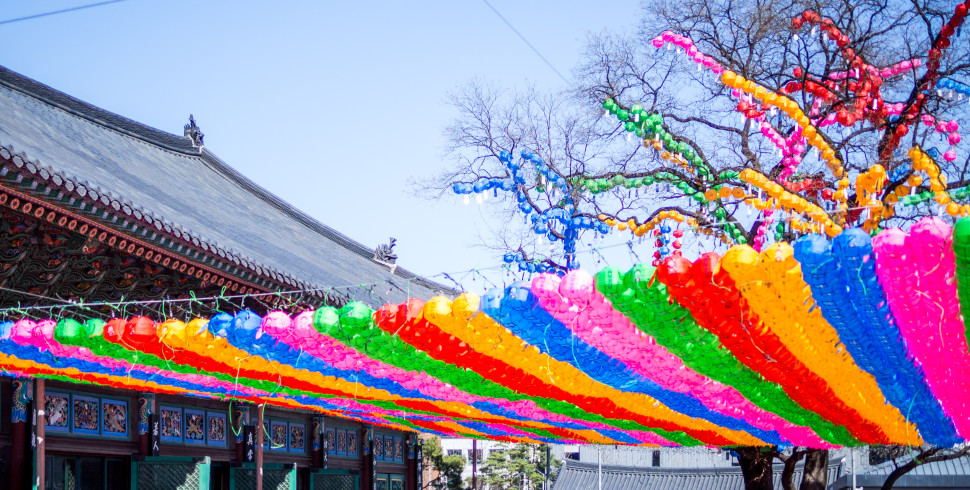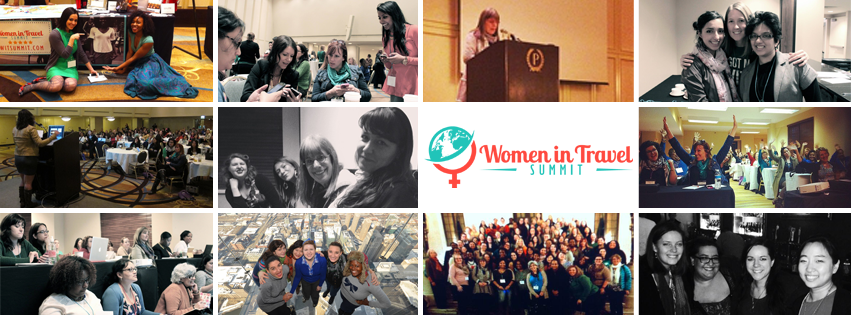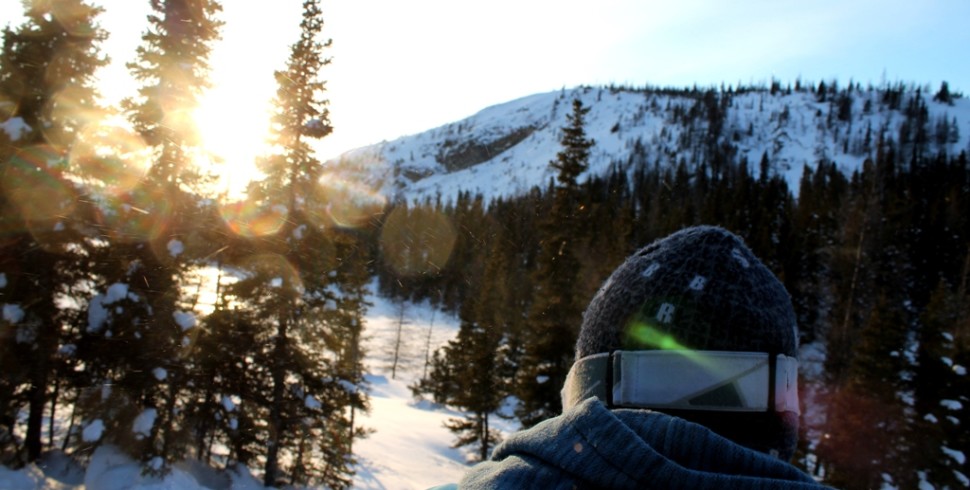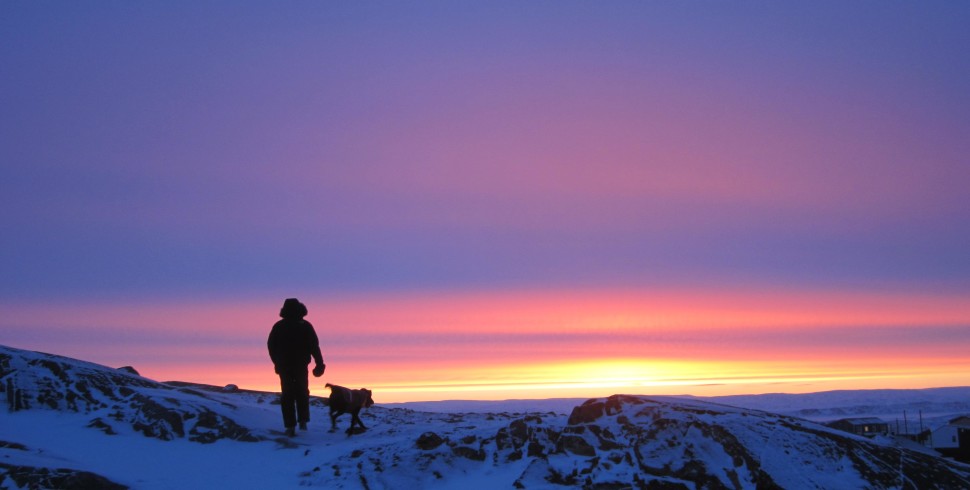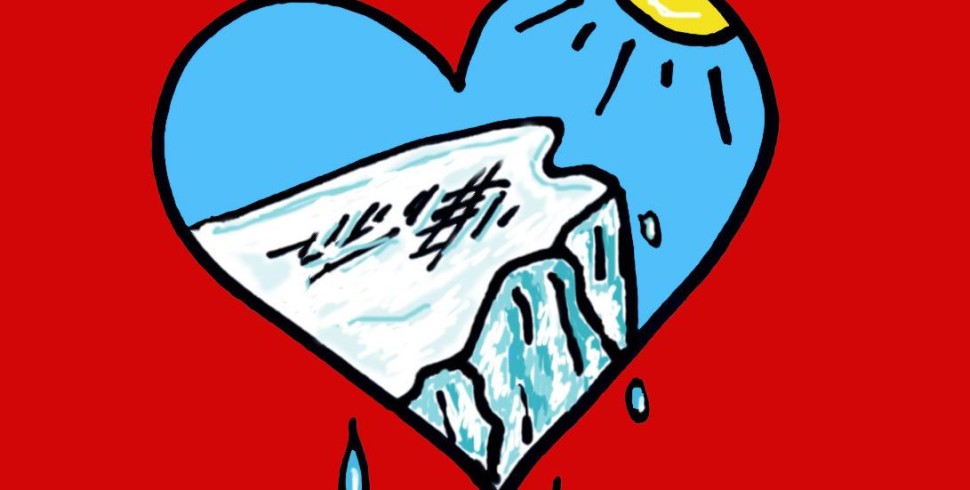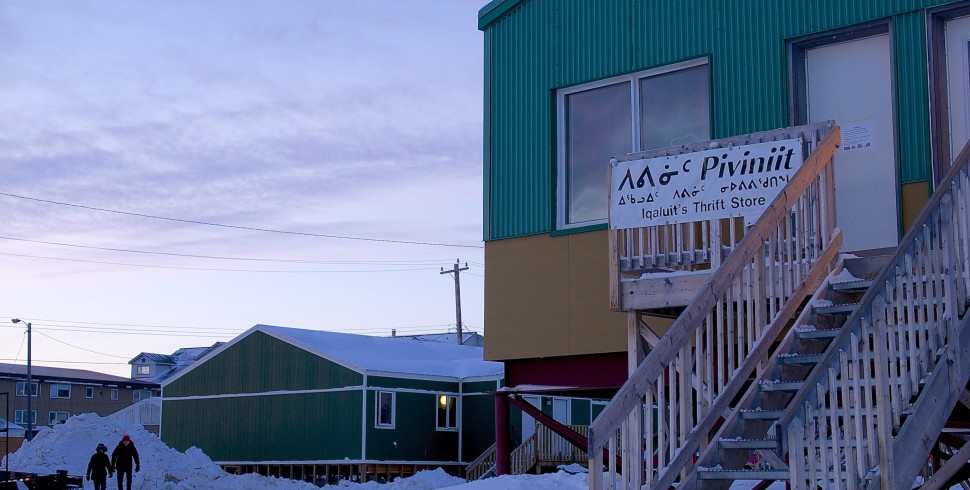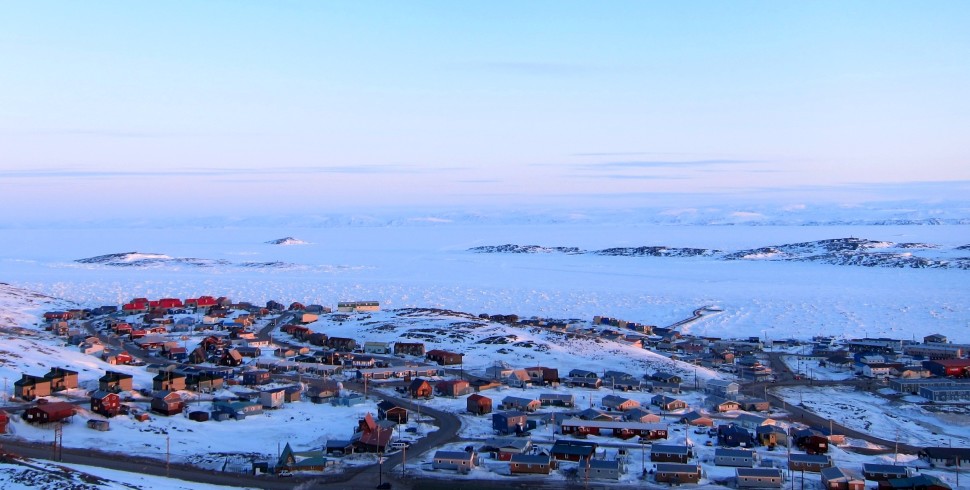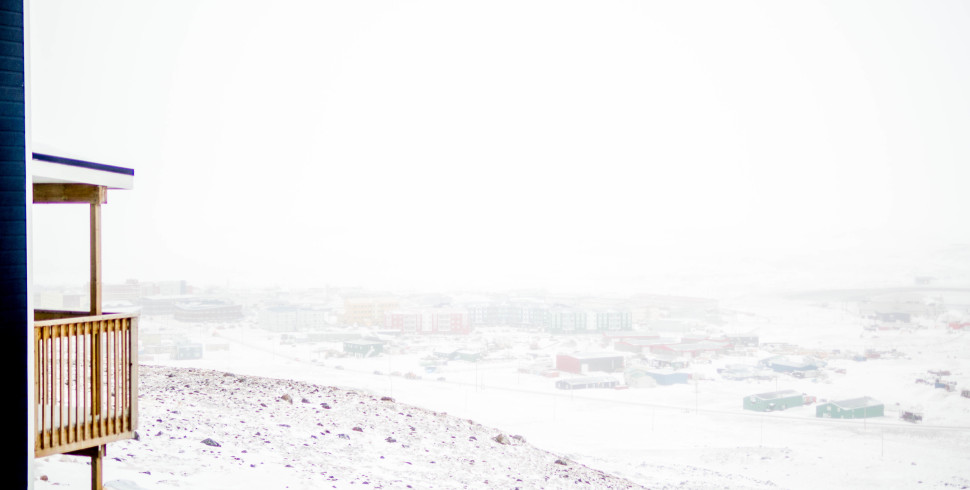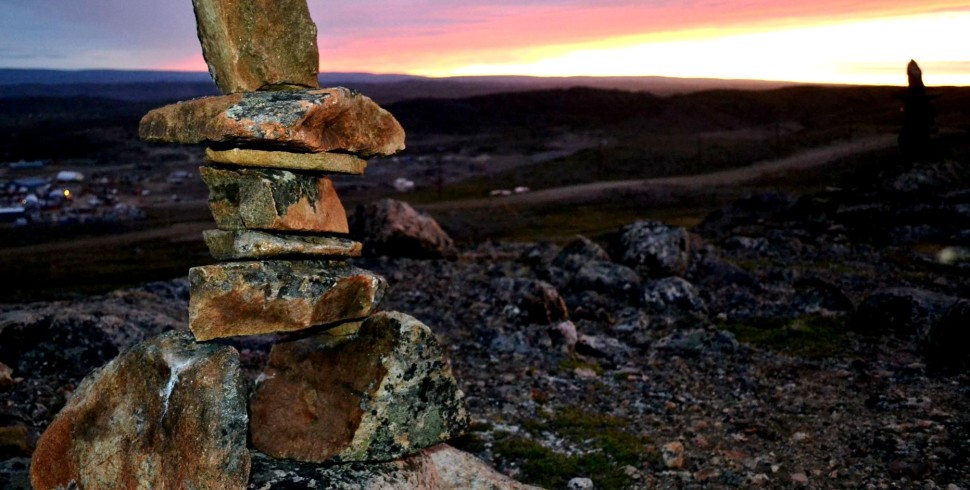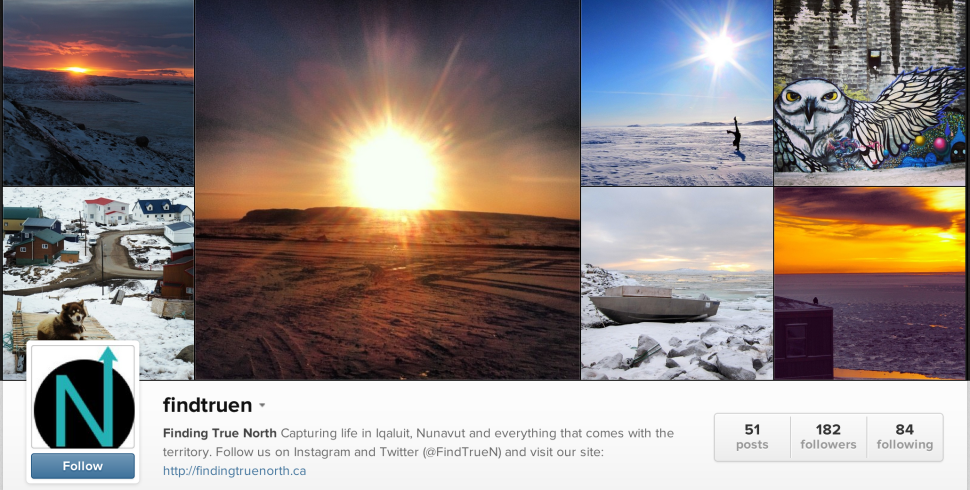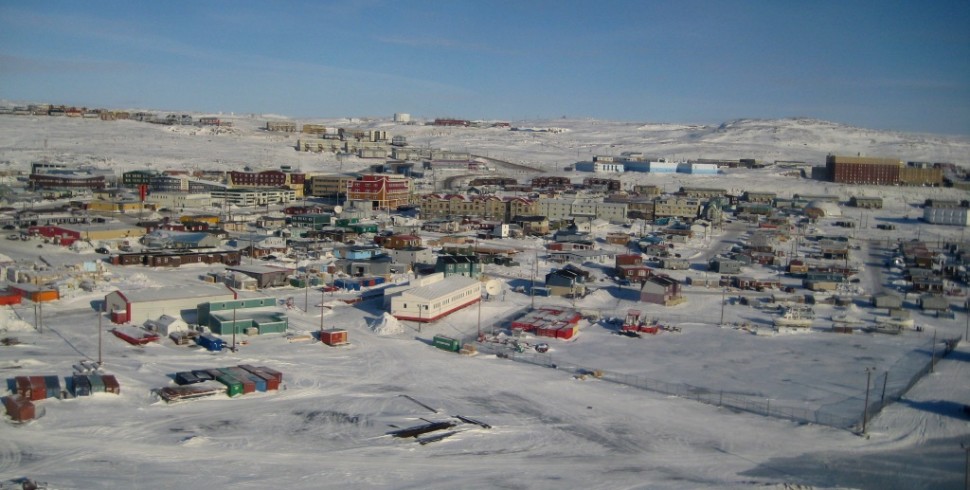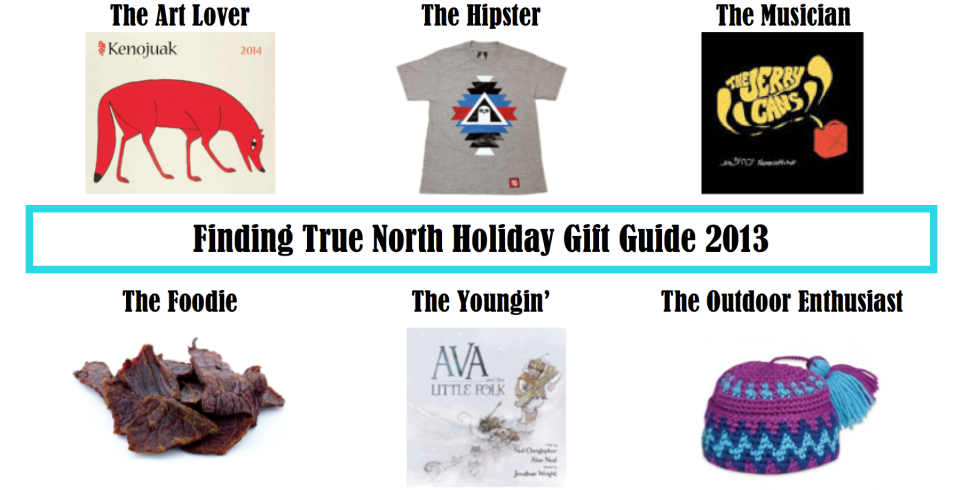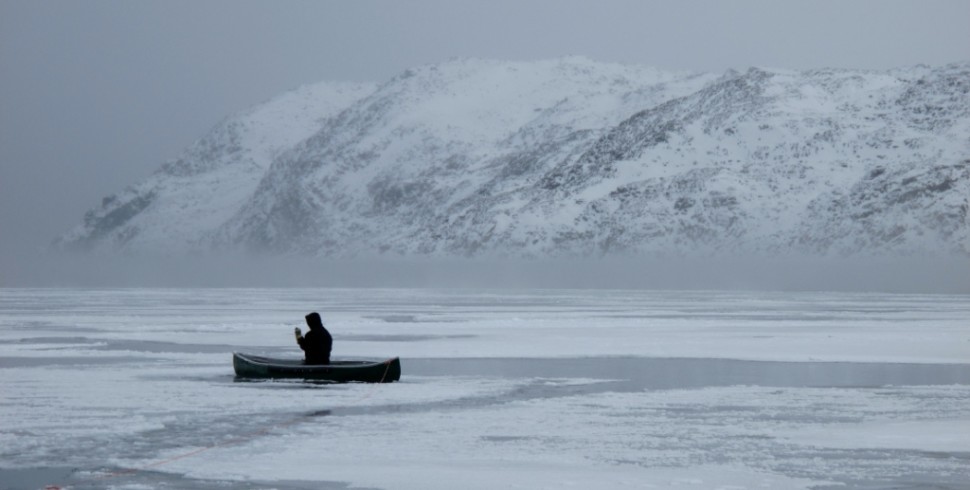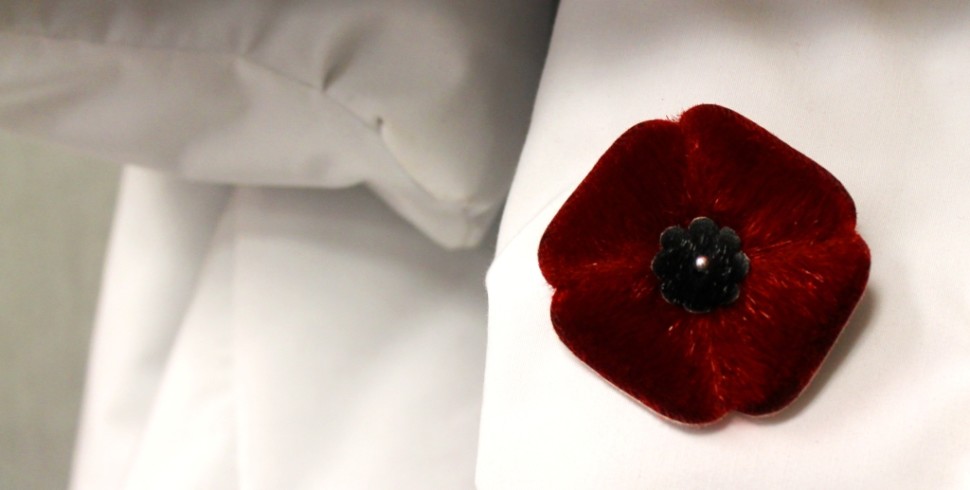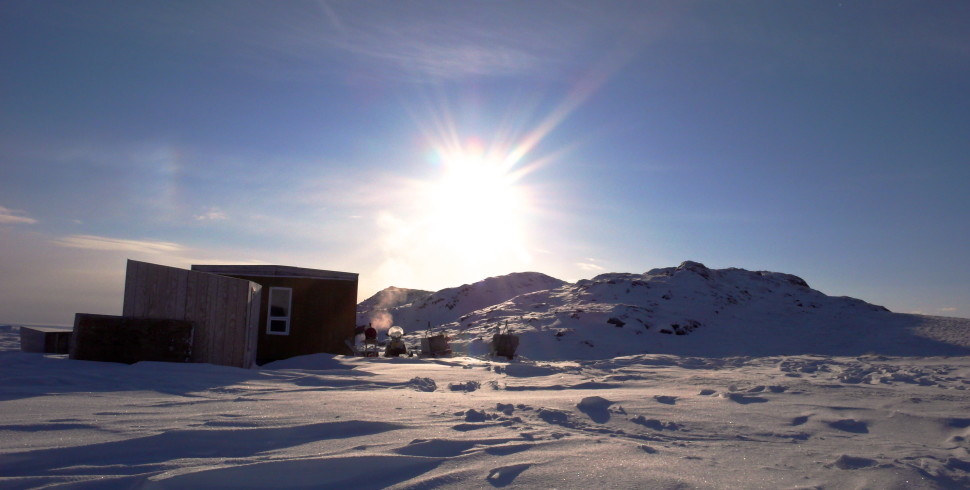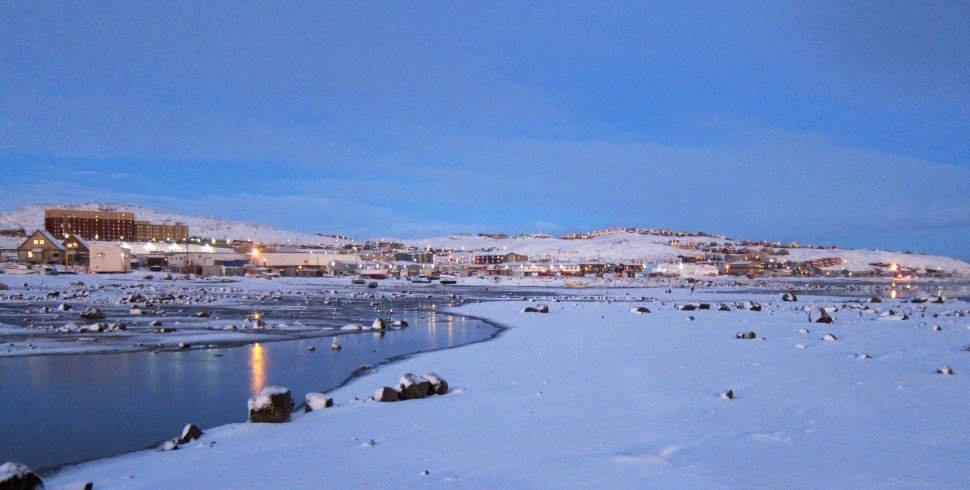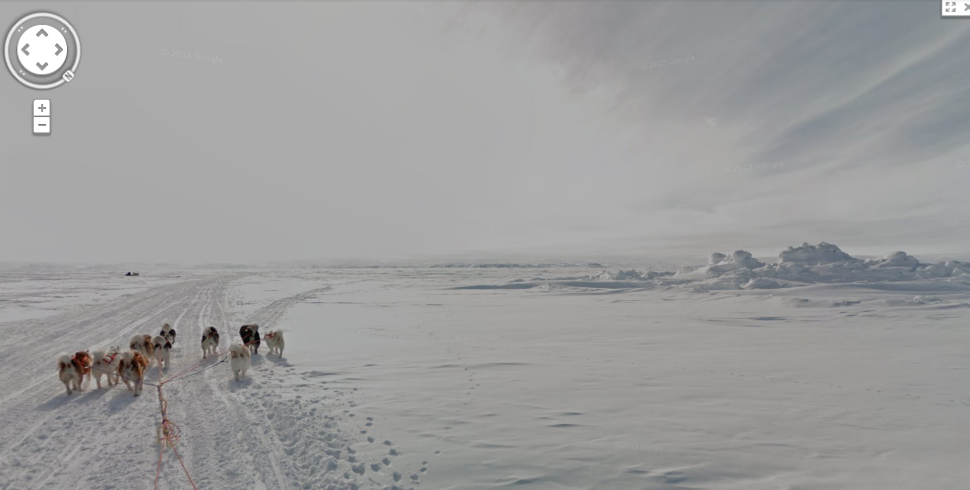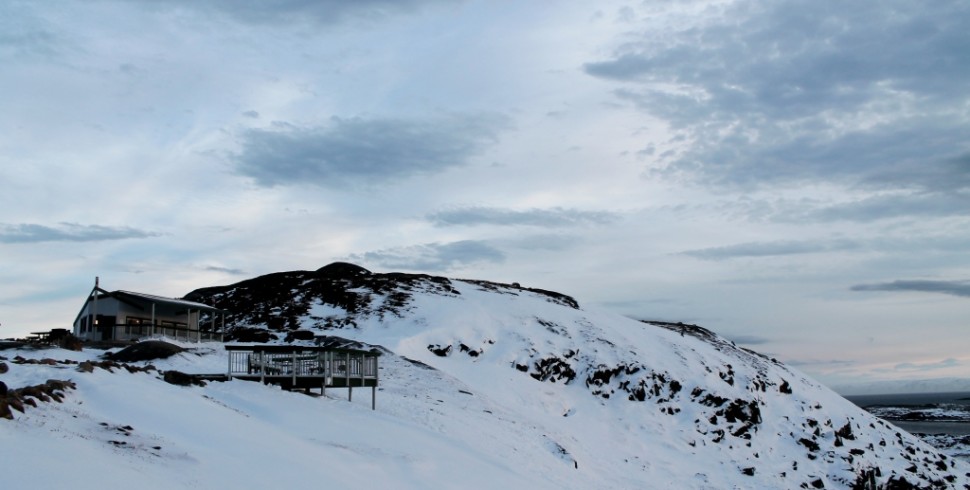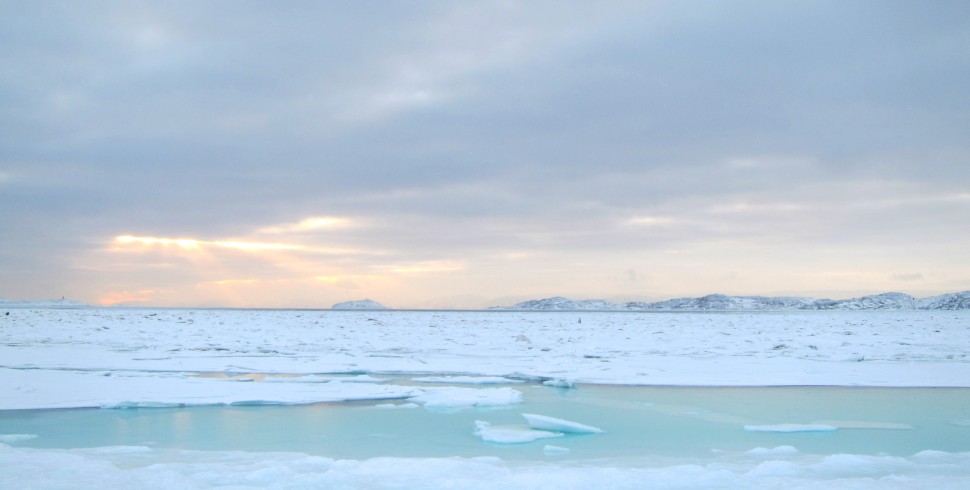Let’s call a spade a spade: Nunavut doesn’t have the best record of waste management. From under-the-radar litter to a headline-achieving dumpcano, the territory faces a unique set of challenges when it comes to dealing with garbage. That’s not to say that local efforts aren’t taking place, because they are, but as is the case for many other issues, the North’s capacity to tackle problems is limited by infrastructure and logistical realities.
Enter Tundra Take-Back, a North-South partnership that is hoping to rid Nunavut of its ever-growing collection of end-of-life vehicles. Initiated in 2014, Tundra Take-Back has a lot planned for 2015. Watch the video below to see what they’ve done so far, and then keep reading to find out what they have in store for this year and how you can get involved.
“What goes up must come down”
Like most other material goods in Nunavut, vehicles are delivered either by plane or sealift to communities. But what happens to these vehicles when they are no longer serviceable? Derelict cars and trucks in Nunavut are rarely recycled due to the complicated and costly process of shipping the remnants down south for proper storage or recycling. These unmanaged end-of-life vehicles not only occupy much-needed space within dumpsites, but they contain harmful pollutants that can have a huge impact on the surrounding environment.
One solution to this plight is Tundra Take-Back‘s Northern end-of-life vehicle recycling program. The program is designed to de-pollute and recycle unusable cars, trucks, and other vehicles. The initiative is led by Summerhill Impact, a Toronto-based not-for-profit organization that is working in partnership with community members, professional automotive recyclers, hamlet offices, local businesses, regional airlines and sealift companies, industry partners, as well as the territorial and federal government.
Tundra Take-Back 2014
Tundra Take-Back’s pilot year was a great success in many ways: the program decommissioned 80 end-of-life vehicles between two Nunavut communities, Arviat and Gjoa Haven. Not only did this effort contribute to environmental management plans, but the program hired local staff to coordinate crew and volunteers, people like Adam Halluqtalik from the Hamlet Office in Gjoa Haven. On the phone from Gjoa, Adam succinctly summarized the need for Tundra-Take Back in his community: “The [end-of-life vehicles] have been sitting at the dump area for many years. It was time for a change.”
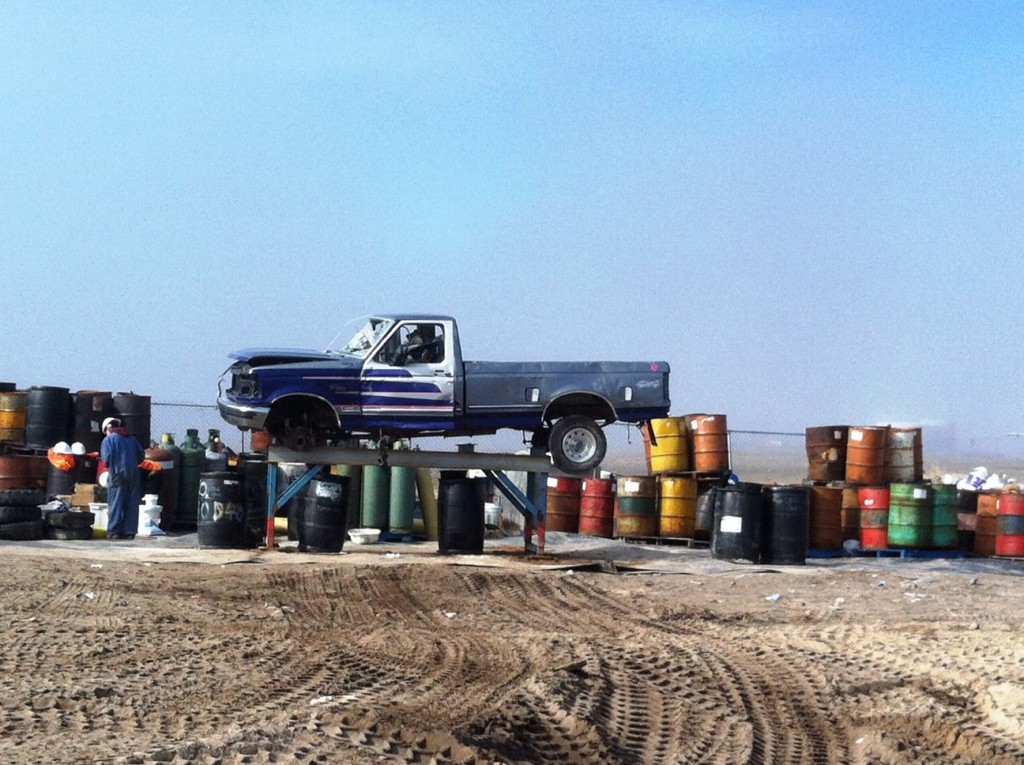
The Gjoa Haven vehicle dismantling area, set up by the Hamlet. Notice the stand and the durable, impermeable plastic sheeting to cover the ground. Photo courtesy of Tundra Take-Back.
The infographic below is our summary of Tundra Take-Back 2014’s yield. The project also led to the development of a Northern end-of-life vehicle recycling guidebook and reference sheets.
Planning for Tundra Take-Back 2015
The team behind Tundra Take-Back 2014 is ready to apply what they’ve learned last year to make the program bigger and better for this year. So what do they have planned? ““We want to expand the scope of the training for next year to cover a broader spectrum for what’s at the dump,” said Janet, “not just the end-of-life vehicles.”
In addition, Tundra Take-Back is hoping to not only return to Arviat and Gjoa Haven to finish what they started, but also branch out into the Baffin region. In doing so, the initiative can promote the development of regional expertise across the territory and create sustained employment opportunities in various communities.
Of course, all of these plans depend on incoming investments, both financial and human. Which brings us to our next section…
How to Get Involved
Whether you live in Nunavut or not, there is an opportunity for all of us to give back with Tundra Take-Back. Here are your options.
1. Spend your money – donate!
Tundra Take-Back 2014 was mostly funded by a grant from Environment Canada, along with other smaller sponsorships and in-kind donations. For this year, Tundra Take-Back has incorporated crowdfunding via a Fundrazr campaign. This is not only to supplement anticipated capital from traditional sources; Janet told us that it will also help “show the federal government and territorial government and other major stakeholders how much people really value this type of work and want to see it happen.”
2. Spend your time – get involved!
We think Janet nailed it when she said, “the people in the north are the best stewards of their own land…They know what it’s like to live up there. They have the biggest investment in nature.”
To find out how you can volunteer or work for Tundra Take-Back, send an email to Summerhill Impact or contact your local Hamlet Office to see if the program is coming to your town.
3. Spend your energy – get vocal!
More than anything, both Janet and Adam stressed the importance of being vocal about waste management issues that are affecting our communities. “Continuing to show care and concern for what’s happening at the dump is really important and will help it stay a top priority and help the local government to direct their activities and their potential funding,” said Janet.
There are many ways you can get vocal, whether its by writing a letter to your MLA, attending community-led efforts to better our environment, or even sharing this post via social media. The potential impacts on environmental and human health are innumerable, both in the immediate future and for the long-term. As Adam put it, “I care about waste management because all of that waste may be polluting our land and our ocean. If we can manage [our waste], it would be a lot easier for us, and the land, and the sea.”
Want to know the latest news about Tundra Take-Back? You can follow Summerhill Impact on Twitter, like them on Facebook, or check out their website.

